Office for Lease
What you need to know about leasing an office space in New York: A Comprehensive Guide.
Manhattan, Brooklyn, Queens, Bronx, Staten Island
Finding office space in New York City may seem overwhelming, but it doesn’t need to be. With these helpful tips, you can discover the perfect workspace for your business and secure a favorable lease agreement.
1. Understand your needs.
Before you start looking at office spaces, take some time to think about your needs. How much space do you need? What kind of layout do you need? What amenities are important to you? Do you need a space that is close to public transportation or to certain amenities? Once you have a good understanding of your needs, you can start narrowing down your search.
2. Do your research.
Once you have a list of potential office spaces, take some time to research each one. Read online reviews, talk to other tenants, and visit the space in person. This will help you get a better sense of the space and whether or not it’s a good fit for your business.
3. Work with a broker.
A commercial real estate broker can help you find the right office space for your business and negotiate the best possible lease terms. Brokers have access to a wide range of office spaces and they know the market inside and out.
4. Understand the lease terms.
Before you sign a lease, be sure to understand all of the terms and conditions. This includes the rent, the lease term, the security deposit, and any other fees. It’s also important to understand your rights and responsibilities as a tenant.
5. Negotiate the best deal.
Once you’ve found a space that you like and you’ve read the lease terms, it’s time to start negotiating. Be prepared to walk away if you’re not happy with the terms. With a little negotiation, you should be able to get a good deal on your office space lease.


Additional tips for leasing an office space in New York City:
Start your search early.
- The office space market in New York City is very competitive, so it’s important to start your search early. This will give you more time to find the right space and negotiate a good deal.
Be flexible with your location.
- If you’re flexible with your location, you’ll have more options to choose from and you may be able to find a better deal. Consider leasing office space in less popular neighborhoods or in boroughs other than Manhattan.
Be prepared to compromise.
- You may not be able to find the perfect office space, but you should be able to find a space that meets most of your needs. Be prepared to compromise on some things, such as the size of the space, the layout, or the amenities.
Ask about free rent and other concessions.
- Landlords are often willing to offer free rent or other concessions to attract tenants. Be sure to ask about this before you sign a lease.
Get everything in writing.
- Once you’ve agreed to the terms of a lease, be sure to get everything in writing. This will help to protect you in case there are any problems down the road.
The best areas to lease office space in New York based on factors such as popularity, amenities, and accessibility:
- Brooklyn
- Bronx
- Manhattan
- Queens
- Staten Island
- DUMBO (Down Under the Manhattan Bridge Overpass): DUMBO is a trendy neighborhood in Brooklyn that is home to a number of creative and tech companies. The neighborhood offers a variety of office space options, from converted warehouses to modern high-rises.
- Downtown Brooklyn: Downtown Brooklyn is the central business district of Brooklyn and is home to a number of Fortune 500 companies. The neighborhood offers a variety of office space options, from high-rise buildings to converted brownstones.
- Williamsburg: Williamsburg is a popular neighborhood in Brooklyn that is home to a number of startups and creative companies. The neighborhood offers a variety of office space options, from converted lofts to modern office buildings.
- Bushwick: Bushwick is an up-and-coming neighborhood in Brooklyn that is home to a number of artists and creative businesses. The neighborhood offers a variety of office space options, from converted warehouses to industrial lofts.
- Park Slope: Park Slope is a family-friendly neighborhood in Brooklyn that is home to a number of small businesses and startups. The neighborhood offers a variety of office space options, from converted brownstones to modern office buildings.
Other neighborhoods in Brooklyn that offer good office space options include: Cobble Hill, Fort Greene, Greenpoint, Navy Yard, Red Hook, Sunset Park.
- Longwood: Longwood is a rapidly developing neighborhood in the Bronx. It is home to a number of new office buildings, as well as several Fortune 500 companies. Longwood is also well-connected to public transportation, making it an ideal location for businesses of all sizes.
- Mott Haven: Mott Haven is another up-and-coming neighborhood in the Bronx. It is home to a mix of new and old office buildings, as well as a number of restaurants and shops. Mott Haven is also well-connected to public transportation, making it an ideal location for businesses of all sizes.
- Melrose: Melrose is a vibrant and diverse neighborhood in the Bronx. It is home to a number of small businesses and startups. Melrose is also well-connected to public transportation, making it an ideal location for businesses of all sizes.
- Tremont: Tremont is a historic neighborhood in the Bronx. It is home to a mix of new and old office buildings, as well as a number of restaurants and shops. Tremont is also well-connected to public transportation, making it an ideal location for businesses of all sizes.
- Soundview: Soundview is a waterfront neighborhood in the Bronx. It is home to a number of new office buildings, as well as several Fortune 500 companies. Soundview is also well-connected to public transportation, making it an ideal location for businesses of all sizes.
- Midtown Manhattan: This is the most popular area to lease office space in Manhattan, and for good reason. It is home to many of the city’s most iconic landmarks, including the Empire State Building, the Chrysler Building, and Rockefeller Center. Midtown Manhattan is also well-served by public transportation, making it easy for employees to get to and from work.
- Downtown Manhattan: This area has become increasingly popular in recent years, as it has undergone a major transformation. Downtown Manhattan is now home to many new office buildings, as well as a variety of restaurants, shops, and cultural attractions. It is also well-served by public transportation.
- Hudson Yards: This new development on the West Side of Manhattan is quickly becoming a popular place to lease office space. Hudson Yards offers a variety of state-of-the-art office buildings, as well as a variety of amenities, including a public park, a shopping mall, and a performing arts center.
- Chelsea: This neighborhood in Midtown Manhattan is known for its art galleries, boutiques, and restaurants. It is also home to a number of high-tech companies. Chelsea is a good option for businesses that want to be in a creative and dynamic neighborhood.
- SoHo: This neighborhood in Lower Manhattan is known for its cast-iron architecture and its trendy shops and restaurants. SoHo is a good option for businesses that want to be in a stylish and sophisticated neighborhood.
Other popular neighborhoods to lease office space in Manhattan include: Tribeca, Flatiron District, Union Square, Garment District, Financial District, Midtown South, East Village, West Village.
- Long Island City: Long Island City is a rapidly growing neighborhood in Queens that is home to a number of tech companies, startups, and other businesses. It is also home to the Gantry Plaza State Park, which offers stunning views of the Manhattan skyline.
- Astoria: Astoria is a vibrant neighborhood in Queens with a diverse mix of businesses and residents. It is also home to the Museum of the Moving Image and Socrates Sculpture Park.
- Jackson Heights: Jackson Heights is a diverse neighborhood in Queens with a large Hispanic population. It is also home to the Jackson Heights Historic District, which is one of the largest historic districts in the United States.
- Flushing: Flushing is a central neighborhood in Queens that is home to a number of businesses, restaurants, and attractions, including the New York Hall of Science and the Queens Center shopping mall.
- Forest Hills: Forest Hills is a quiet neighborhood in Queens with a mix of residential and commercial properties. It is also home to the Forest Hills Tennis Stadium, which hosts the US Open tennis tournament each year.
Other notable neighborhoods for leasing office space in Queens include Sunnyside, Woodside, and Ridgewood.
- The Corporate Park of Staten Island: The Corporate Park of Staten Island is the largest private real estate developer on Staten Island, and they offer a wide range of office space options to choose from. Their office spaces are located in a variety of locations throughout the island, and they offer a variety of amenities, such as conference rooms, fitness centers, and on-site parking.
- The Staten Island Mall: The Staten Island Mall is a large regional shopping mall, but it also offers a variety of office space options for lease. Their office spaces are located in a convenient location, and they offer a variety of amenities, such as on-site parking and security.
- The Staten Island Ferry Terminal: The Staten Island Ferry Terminal is a major transportation hub, and it also offers a variety of office space options for lease. Their office spaces are located in a convenient location, and they offer a variety of amenities, such as on-site parking and security.
- The Staten Island Teleport: The Staten Island Teleport is a major telecommunications hub, and it also offers a variety of office space options for lease. Their office spaces are located in a convenient location, and they offer a variety of amenities, such as on-site parking and security.
- The Staten Island Business Center: The Staten Island Business Center is a co-working space that offers a variety of office space options for lease. Their office spaces are located in a convenient location, and they offer a variety of amenities, such as conference rooms, a kitchen, and high-speed internet.
Quick search:
Browse Office Spaces for Lease in New York, New Jersey or Pennsylvania.
 FOR SALE
FOR SALE
5902 14th Avenue | 25,000 SF Corner Property For Sale in Prime Borough Park
5902 14th Avenue | 25,000 SF Corner Property For Sale in Prime Borough Park
5902 14th Avenue, Brooklyn, NY, 11219
- Retail
- for Sale
- 2% for TSC Sale / 3% Cobroke
City: Brooklyn
State: NY
Min Size: 25000
Zoning: M1-1
Key Tag: Show
Listing Agent: Shlomi Bagdadi, Jack Sardar
Vented: NO
Borough: Brooklyn
Neighborhood: Borough Park
Zip Code: 11219
Sales Price : $9,500,000
More Info FOR LEASE
FOR LEASE
10,500 SF | 2179 Clarendon Road | Public Parking & Storage Space – Includes 1,000 SF Executive Office + 100 SF Dispatch Office
10,500 SF | 2179 Clarendon Road | Public Parking & Storage Space – Includes 1,000 SF Executive Office + 100 SF Dispatch Office
2179 Clarendon Road, Brooklyn, NY, 11226
- Industrial
- for Lease
Unit 1
Title: Parking & Storage Space
Price: $17,500/per month
Size: 10,500 SF
City: Brooklyn
State: NY
Min Size: 10500
Zoning: R5B, R6A
Key Tag: Show
Listing Agent: Shlomi Bagdadi
Vented: NO
Borough: Brooklyn
Neighborhood: East Flatbush
Zip Code: 11226
Price: $17,500/monthly
More Info FOR LEASE
FOR LEASE
2,300 SF | 354 Metropolitan Avenue | Rare Restaurant Space for Lease – Full Liquor License Included
2,300 SF | 354 Metropolitan Avenue | Rare Restaurant Space for Lease – Full Liquor License Included
354 Metropolitan Avenue, Brooklyn, NY, 11211
- Retail
- for Lease
Unit 1
Title: 354 Metropolitan Avenue
Price: $18,500/per month
Size: 2,300 SF
City: Brooklyn
State: NY
Min Size: 2300
Zoning: M1-2/R6A
Key Tag: Show
Listing Agent: Shlomi Bagdadi, Samuel Shouela
Vented: YES
Borough: Brooklyn
Neighborhood: Williamsburg
Zip Code: 11211
Price: $18,500/monthly
More Info FOR LEASE
FOR LEASE
950 SF | 341 Central Avenue | Corner Storefront With Glass Frontage For Lease
950 SF | 341 Central Avenue | Corner Storefront With Glass Frontage For Lease
341 Central Ave, Jersey City, NJ, 07307
- Retail
- for Lease
Unit 1
Title: 341 Central Avenue
Price: $5,000/per month
Size: 950 SF
City: Jersey City
State: NJ
Min Size: 950
Zoning: NC
Listing Agent: Shlomi Bagdadi, Freddy Bagdadi
Zip Code: 07307
Price: $5,000/monthly
More Info FOR LEASE
FOR LEASE
500 SF | 1175 Fulton Street | Vanilla Box Retail For Lease
500 SF | 1175 Fulton Street | Vanilla Box Retail For Lease
1175 Fulton St, Brooklyn, NY, 11216
- Retail
- for Lease
Unit 1
Title: 1175 Fulton St
Price: $6,500/per month
Size: 500 SF
City: Brooklyn
State: NY
Min Size: 500
Zoning: R7D
Key Tag: Show
Listing Agent: Shlomi Bagdadi, Leo Beda, Freddy Bagdadi
Vented: CAN BE
Borough: Brooklyn
Neighborhood: Bed-Stuy
Zip Code: 11216
Price: $6,500/monthly
More Info FOR LEASE
FOR LEASE
1,270 SF | 2441 Flatbush Avenue | Prime Single-Story Open Box Retail Space for Lease
1,270 SF | 2441 Flatbush Avenue | Prime Single-Story Open Box Retail Space for Lease
2441 Flatbush Ave, Brooklyn, NY, 11234
- Retail
- for Lease
Unit 1
Title: 2441 Flatbush Ave
Price: $6,500/per month
Size: 1,270 SF
City: Brooklyn
State: NY
Min Size: 1270
Zoning: C8-1
Listing Agent: Shlomi Bagdadi, Samuel Shouela
Zip Code: 11234
Price: $6,500/monthly
More Info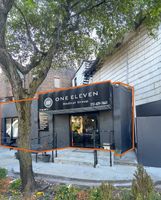 FOR LEASE
FOR LEASE
1,000 SF | 111 Bay 50th Street | Turnkey Medical Space With 20 Feet Of Frontage For Lease
1,000 SF | 111 Bay 50th Street | Turnkey Medical Space With 20 Feet Of Frontage For Lease
111 Bay 50th Street, Brooklyn, NY, 11214
- Retail
- for Lease
Unit 1
Title: 111 Bay 50th Street
Size: 1,000 SF
City: Brooklyn
State: NY
Min Size: 1000
Zoning: R5
Listing Agent: Shlomi Bagdadi, Fredy Halabi, Michael Elkharrat
Zip Code: 11214
Price: Call For Price
More Info FOR LEASE
FOR LEASE
2,500 SF | 3255 Fulton Street | Open Box Retail Space with Gas Line Access for Lease
2,500 SF | 3255 Fulton Street | Open Box Retail Space with Gas Line Access for Lease
3255 Fulton Street, Brooklyn, NY, 11208
- Retail
- for Lease
- 5%
Unit 1
Title: 3255 Fulton St
Price: $5,500/per month
Size: 2,500 SF
City: Brooklyn
State: NY
Min Size: 2500
Zoning: R6B, C2-4
Key Tag: Show
Listing Agent: Shlomi Bagdadi, Samuel Shouela
Vented: NO
Borough: Brooklyn
Neighborhood: Cypress Hills
Zip Code: 11208
Price: $5,500/monthly
More Info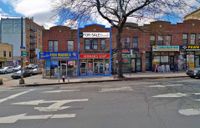 FOR SALE
FOR SALE
410 Utica Avenue | Fully Renovated Commercial Building with Turn-Key Restaurant – Delivered Vacant
410 Utica Avenue | Fully Renovated Commercial Building with Turn-Key Restaurant – Delivered Vacant
410 Utica Avenue, Brooklyn, NY, 11213
- Retail
- for Sale
- 4% if tsc sells and 6% co broke
City: Brooklyn
State: NY
Min Size: 2772
Zoning: R7-1
Key Tag: Show
Listing Agent: Shlomi Bagdadi, Jack Sardar
Vented: NO
Borough: Brooklyn
Neighborhood: Crown Heights
Zip Code: 11213
Sales Price : $1,395,000
More Info FOR LEASE
FOR LEASE
3,600 SF – 7,200 SF | 822 McDonald Avenue | Luxurious 3 Story Office Building for Sublease
3,600 SF – 7,200 SF | 822 McDonald Avenue | Luxurious 3 Story Office Building for Sublease
822 McDonald Avenue, Brooklyn, NY, 11218
- Office
- for Lease
Unit 1+
Title: 822 McDonald Ave
Price: $25,000/per month
Size: 7,200 SF
Unit 2+
Title: Lower Level + Ground Floor
Price: $25,000/per month
Size: 3,600 SF
City: Brooklyn
State: NY
Min Size: 3600
Zoning: M1-1
Key Tag: Show
Listing Agent: Shlomi Bagdadi, Samuel Shouela
Vented: NO
Borough: Brooklyn
Neighborhood: Borough Park
Zip Code: 11218
Price: $25,000/monthly
More Info FOR LEASE
FOR LEASE
2,100 SF | 1465 Myrtle Avenue | Corner 2nd Floor Retail Office Space in Prime Bushwick for Lease
2,100 SF | 1465 Myrtle Avenue | Corner 2nd Floor Retail Office Space in Prime Bushwick for Lease
1465 Myrtle Avenue, Brooklyn, NY, 11237
- Retail
- for Lease
Unit 1
Title: 1465 Myrtle Avenue
Price: $4,900/per month
Size: 2,100 SF
City: Brooklyn
State: NY
Min Size: 2100
Zoning: R7-1 / C1-3
Key Tag: Show
Listing Agent: Shlomi Bagdadi
Vented: NO
Borough: Brooklyn
Neighborhood: Bushwick
Zip Code: 11237
Price: $4,900/monthly
More Info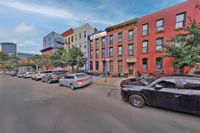 FOR SALE
FOR SALE
255 20th Street | 3 Family Brick House for Sale in South Slope
255 20th Street | 3 Family Brick House for Sale in South Slope
255 20th St, Brooklyn, NY, 11215
- Multifamily
- for Sale
- 4%
City: Brooklyn
State: NY
Min Size: 2416
Zoning: R6B
Key Tag: Show
Listing Agent: Shlomi Bagdadi, Jack Sardar
Vented: NO
Borough: Brooklyn
Neighborhood: South Slope
Zip Code: 11215
Sales Price : $1,950,000
More Info FOR LEASE
FOR LEASE
850 SF | 208 Malcolm X Boulevard | Retail Space for Lease
850 SF | 208 Malcolm X Boulevard | Retail Space for Lease
208 Malcolm X Boulevard, Brooklyn, NY, 11221
- Retail
- for Lease
Unit 1
Title: 208 Malcolm X Blvd
Price: $2,999/per month
Size: 850 SF
City: Brooklyn
State: NY
Min Size: 850
Zoning: R6A, C2-4
Key Tag: Show
Listing Agent: Shlomi Bagdadi
Vented: NO
Borough: Brooklyn
Neighborhood: Bed-Stuy
Zip Code: 11221
Price: $2,999/monthly
More Info FOR LEASE
FOR LEASE
700 SF | 358 Kosciuszko Street | Retail Space with Basement in Bed-Stuy for Lease
700 SF | 358 Kosciuszko Street | Retail Space with Basement in Bed-Stuy for Lease
358 Kosciuszko Street, Brooklyn, NY, 11221
- Retail
- for Lease
Unit 1
Title: 358 Kosciuszko Street
Price: $3,500/per month
Size: 700 SF
City: Brooklyn
State: NY
Min Size: 700
Zoning: R6A, C2-4
Key Tag: Show
Listing Agent: Shlomi Bagdadi
Vented: NO
Borough: Brooklyn
Neighborhood: Bed-Stuy
Zip Code: 11221
Price: $3,500/monthly
More Info FOR LEASE
FOR LEASE
1,500 SF | 2324 Bathgate Avenue | 2nd Floor Vanilla Box Office Retail Space for Lease
1,500 SF | 2324 Bathgate Avenue | 2nd Floor Vanilla Box Office Retail Space for Lease
2324 Bathgate Ave, Bronx, NY, 10458
- Office
- for Lease
- 3 months flat%
Unit 1
Title: 2324 Bathgate Avenue
Price: $4,200/SF per year
Size: 1,500 SF
City: Bronx
State: NY
Min Size: 1500
Zoning: M1-4/R7A
Key Tag: Show
Listing Agent: Shlomi Bagdadi, Joey Sakkal
Vented: NO
Borough: The Bronx
Neighborhood: Belmont
Zip Code: 10458
Price: $4,200/SF per year
More Info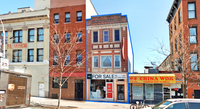 FOR SALE
FOR SALE
55 4th Avenue | Prime Park Slope Mixed Use Building For Sale – Delivered Vacant
55 4th Avenue | Prime Park Slope Mixed Use Building For Sale – Delivered Vacant
55 4th Avenue, Brooklyn, NY, 11217
- Retail
- for Sale
- 5% IF TSC SELLS AND 6% CO BROKE
City: Brooklyn
State: NY
Min Size: 3600
Zoning: C4-4D
Key Tag: Show
Listing Agent: Shlomi Bagdadi, Jack Sardar
Vented: NO
Borough: Brooklyn
Neighborhood: Park Slope
Zip Code: 11217
Sales Price : $3,250,000
More Info FOR SALE
FOR SALE
20-14 Cornaga Avenue | Corner Development Site For Sale W/ Exis. Auto Body – Approx. 15k Buildable SF
20-14 Cornaga Avenue | Corner Development Site For Sale W/ Exis. Auto Body – Approx. 15k Buildable SF
20-14 Cornaga Avenue, Far Rockaway, NY, 11691
- Industrial
- for Sale
- 4%
City: Far Rockaway
State: NY
Min Size: 1400
Zoning: R6 / C2-4 (MIH)
Key Tag: Show
Listing Agent: Shlomi Bagdadi, Jack Sardar
Vented: NO
Borough: Queens
Neighborhood: Far Rockaway
Zip Code: 11691
Sales Price : $799,000
More Info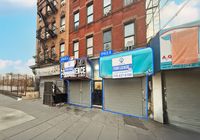 FOR LEASE
FOR LEASE
450 – 500 SF | 520 E 149th Street | South Bronx Retail Space for Lease
450 – 500 SF | 520 E 149th Street | South Bronx Retail Space for Lease
520 E 149th St, Bronx, NY, 10455
- Retail
- for Lease
Unit 1+
Title: Space A
Price: $3,300/per month
Size: 450 SF
Unit 2+
Title: Space B
Price: $3,300/per month
Size: 500 SF
City: Bronx
State: NY
Min Size: 450
Zoning: C7
Key Tag: Show
Listing Agent: Shlomi Bagdadi, Avi Saadia
Vented: NO
Borough: The Bronx
Neighborhood: South Bronx
Zip Code: 10455
Price: $3,300/monthly
More Info FOR LEASE
FOR LEASE
1,250 SF | 139 Nevins Street | Open Concept Retail Space with Full Basement for Lease
1,250 SF | 139 Nevins Street | Open Concept Retail Space with Full Basement for Lease
139 Nevins Street, Brooklyn, NY, 11217
- Retail
- for Lease
- 4 months
Unit 1
Title: 139 Nevins Street
Price: $8,000/per month
Size: 1,250 SF
City: Brooklyn
State: NY
Min Size: 1250
Zoning: R6A
Key Tag: Show
Listing Agent: Shlomi Bagdadi, Jack Sardar
Vented: NO
Borough: Brooklyn
Neighborhood: Boerum Hill
Zip Code: 11217
Price: $8,000/monthly
More Info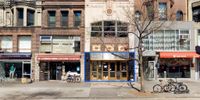 FOR LEASE
FOR LEASE
1,000 SF | 143 W 72nd St | Upper West Side Retail Space for Lease
1,000 SF | 143 W 72nd St | Upper West Side Retail Space for Lease
143 West 72nd Street, New York, NY, 10023
- Retail
- for Lease
- 5%
Unit 1
Title: LOWER LEVEL
Price: $3,000/per month
Size: 1,000 SF
City: New York
State: NY
Min Size: 1000
Zoning: C4-6A
Key Tag: Show
Listing Agent: Shlomi Bagdadi, Freddy Bagdadi
Vented: NO
Borough: Manhattan
Neighborhood: Upper West Side
Zip Code: 10023
Price: $3,000/monthly
More Info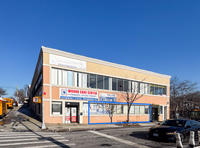 FOR LEASE
FOR LEASE
2,500 – 4,200 SF | 65-35 Queens Boulevard | Prime Retail + Turnkey Medical Office Space Available
2,500 – 4,200 SF | 65-35 Queens Boulevard | Prime Retail + Turnkey Medical Office Space Available
65-35 Queens Boulevard, Woodside, NY, 11377
- Retail
- for Lease
- 4%
Unit 1+
Title: Space A
Price: $40/SF per year
Size: 4,200 SF
Unit 2+
Title: Space B
Price: $40/SF per year
Size: 2,500 SF
City: Woodside
State: NY
Min Size: 2500
Zoning: R7X, R5B, C2-3, C2-2
Key Tag: Show
Listing Agent: Shlomi Bagdadi, Richard Babeck
Vented: NO
Borough: Queens
Neighborhood: Woodside
Zip Code: 11377
Price: $40/SF per year
More Info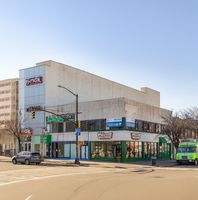 FOR LEASE
FOR LEASE
2,500 SF | 22-04 31st Street | Prime Retail Space with Mezzanine & Basemenet for Lease
2,500 SF | 22-04 31st Street | Prime Retail Space with Mezzanine & Basemenet for Lease
22-04 31st Street, Astoria-Ditmars, NY, 11105
- Retail
- for Lease
Unit 1
Title: 22-04 31st St - Ground Floor Ret
Price: $150/SF per year
Size: 2,500 SF
City: Astoria-Ditmars
State: NY
Min Size: 2500
Zoning: C4-2A
Listing Agent: Shlomi Bagdadi, Richard Babeck
Zip Code: 11105
Price: $150/SF per year
More Info FOR LEASE
FOR LEASE
420 SF | 170 South 1st Street | Prime Community Facility in Williamsburg for Lease
420 SF | 170 South 1st Street | Prime Community Facility in Williamsburg for Lease
170 South 1st Street, Brooklyn, NY, 11211
- Special Purpose
- for Lease
Unit 1
Title: 170 South 1st Street- Community
Price: $2,000/per month
Size: 420 SF
City: Brooklyn
State: NY
Min Size: 420
Zoning: R6
Listing Agent: Shlomi Bagdadi, Michael Elkharrat
Zip Code: 11211
Price: $2,000/monthly
More Info FOR SALE
FOR SALE
6,400 SF | Building Condo in Prime Williamsburg with 3 Commercial Spaces for Sale
6,400 SF | Building Condo in Prime Williamsburg with 3 Commercial Spaces for Sale
170 South 1st Street, Brooklyn, NY, 11211
- Special Purpose
- for Sale
City: Brooklyn
State: NY
Min Size: 16183
Zoning: R6
Listing Agent: Shlomi Bagdadi
Zip Code: 11211
Sales Price : $4,750,000
More Info FOR LEASE
FOR LEASE
1,000 SF | 900 Rogers Place | Retail/Office Space for Lease
1,000 SF | 900 Rogers Place | Retail/Office Space for Lease
900 Rogers Place, Bronx, NY, 10459
- Retail
- for Lease
- 2 months rent%
Unit 1
Title: 900 Rogers Pl
Price: $4,000/per month
Size: 1,000 SF
City: Bronx
State: NY
Min Size: 1000
Zoning: R7-1, C1-4
Key Tag: Show
Listing Agent: Shlomi Bagdadi, Avi Saadia
Vented: NO
Borough: The Bronx
Neighborhood: Longwood
Zip Code: 10459
Price: $4,000/monthly
More Info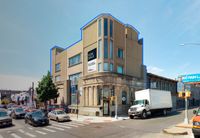 FOR SALE
FOR SALE
12,000 SF | 2588 Atlantic Avenue | Fully Occupied 3-Story Commercial Building for Sale with Billboard, and Cell Tower Option
12,000 SF | 2588 Atlantic Avenue | Fully Occupied 3-Story Commercial Building for Sale with Billboard, and Cell Tower Option
2588 Atlantic Avenue, Brooklyn, NY, 11207
- Retail
- for Sale
- $250,000
City: Brooklyn
State: NY
Min Size: 12000
Zoning: M3-2
Key Tag: Show
Listing Agent: Shlomi Bagdadi
Vented: NO
Borough: Brooklyn
Neighborhood: East New York
Zip Code: 11207
Sales Price : $5,250,000
More Info FOR LEASE
FOR LEASE
1,500 – 7,000 SF | 501 Bushwick Avenue | Retail Portfolio Offering: Three Independent Spaces, One Prime Location
1,500 – 7,000 SF | 501 Bushwick Avenue | Retail Portfolio Offering: Three Independent Spaces, One Prime Location
501 Bushwick Avenue, Brooklyn, NY, 11206
- Retail
- for Lease
Unit 1+
Title: SPACE A
Price: $21,000/per month
Size: 7,000 SF
Unit 2+
Title: Space B
Price: $9,500/per month
Size: 5,500 SF
Unit 3+
Title: Space C
Price: $5,500/per month
Size: 1,500 SF
Unit 4+
Title: SPACE 4
Price: $18,000/per month
Size: 6,900 SF
City: Brooklyn
State: NY
Min Size: 1500
Zoning: R7A
Key Tag: Show
Listing Agent: Shlomi Bagdadi, Fred Betesh
Vented: NO
Borough: Brooklyn
Neighborhood: Bushwick
Zip Code: 11206
Price: $5,500-$21,000/monthly
More Info FOR SALE
FOR SALE
10,000 SF | 23-22 30th Avenue | Turn Key Medical Building For Sale In Astoria – Strong Cap Rate
10,000 SF | 23-22 30th Avenue | Turn Key Medical Building For Sale In Astoria – Strong Cap Rate
23-22 30th Avenue, Astoria, NY, 11102
- Retail
- for Sale
- 3% co broke or 2% in tsc
City: Astoria
State: NY
Min Size: 9540
Zoning: R6A, R6B
Key Tag: Show
Listing Agent: Shlomi Bagdadi, Jack Sardar
Vented: NO
Borough: Queens
Neighborhood: Astoria
Zip Code: 11102
Sales Price : $6,600,000
More Info FOR LEASE
FOR LEASE
7,000 – 21,000 SF | 590 Smith Street | Flex Warehouse / Office Space for Lease
7,000 – 21,000 SF | 590 Smith Street | Flex Warehouse / Office Space for Lease
590 Smith Street, Brooklyn, NY, 11231
- Office
- for Lease
Unit 1+
Title: Floor 1
Price: $15/SF per year
Size: 7,000 SF
Unit 2+
Title: Floor 2
Price: $15/SF per year
Size: 7,000 SF
Unit 3+
Title: Floor 3
Price: $15/SF per year
Size: 7,000 SF
City: Brooklyn
State: NY
Min Size: 7000
Zoning: M3-1
Key Tag: Show
Listing Agent: Shlomi Bagdadi, Fred Betesh, Jack Sardar
Vented: NO
Borough: Brooklyn
Neighborhood: Red Hook
Zip Code: 11231
Price: $15/SF per year
More Info FOR SALE
FOR SALE
1,222 SF | Commercial Space for Sale on Bay Parkway – Attractive Seller Financing Available
1,222 SF | Commercial Space for Sale on Bay Parkway – Attractive Seller Financing Available
8800 Bay Parkway, Brooklyn, NY, 11214
- Retail
- for Sale
City: Brooklyn
State: NY
Min Size: 47064
Zoning: R6
Listing Agent: Shlomi Bagdadi, Jack Sardar, Michael Elkharrat
Zip Code: 11214
Sales Price : $549,900
More Info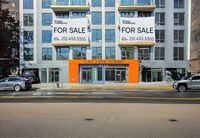 FOR SALE
FOR SALE
700 SF | Commercial Space for Sale on Bay Parkway – Attractive Seller Financing Available
700 SF | Commercial Space for Sale on Bay Parkway – Attractive Seller Financing Available
8800 Bay Parkway, Brooklyn, NY, 11214
- Retail
- for Sale
City: Brooklyn
State: NY
Min Size: 47064
Zoning: R6
Listing Agent: Shlomi Bagdadi, Jack Sardar, Michael Elkharrat
Zip Code: 11214
Sales Price : $315,000
More Info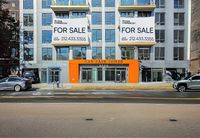 FOR SALE
FOR SALE
2,355 SF | Commercial Space for Sale on Bay Parkway – Attractive Seller Financing Available
2,355 SF | Commercial Space for Sale on Bay Parkway – Attractive Seller Financing Available
8800 Bay Parkway, Brooklyn, NY, 11214
- Retail
- for Sale
City: Brooklyn
State: NY
Min Size: 47064
Zoning: R6
Listing Agent: Shlomi Bagdadi, Jack Sardar, Michael Elkharrat
Zip Code: 11214
Sales Price : $1,059,750
More Info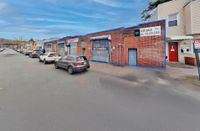 FOR SALE
FOR SALE
87-21 76th Street | 12,000 SF Warehouse For Sale – Delivered Vacant
87-21 76th Street | 12,000 SF Warehouse For Sale – Delivered Vacant
87-21 76th Street, Woodhaven, NY, 11421
- Industrial
- for Sale
City: Woodhaven
State: NY
Min Size: 12000
Zoning: R3-1
Key Tag: Show
Listing Agent: Shlomi Bagdadi, Jack Sardar
Vented: NO
Borough: Queens
Neighborhood: Woodhaven
Zip Code: 11421
Sales Price : $3,800,000
More Info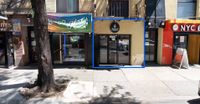 FOR LEASE
FOR LEASE
800 SF | 126 MacDougal Street | Vented High Traffic Turn-Key Ice Cream Shop for Lease
800 SF | 126 MacDougal Street | Vented High Traffic Turn-Key Ice Cream Shop for Lease
126 MacDougal Street, New York, NY, 10012
- Retail
- for Lease
- 2 months
Unit 1
Title: 126 MacDougal St
Price: $7,500/per month
Size: 800 SF
City: New York
State: NY
Min Size: 800
Zoning: R7-2, C1-5
Key Tag: Show
Listing Agent: Shlomi Bagdadi, Leo Beda, Avi Saadia
Vented: YES
Borough: Manhattan
Neighborhood: Greenwich Village
Zip Code: 10012
Price: $7,500/monthly
More Info FOR SALE
FOR SALE
350 Manhattan Avenue | Fully Occupied Corner Free Market Residential Building in the Heart of Williamsburg
350 Manhattan Avenue | Fully Occupied Corner Free Market Residential Building in the Heart of Williamsburg
350 Manhattan Avenue, Brooklyn, NY, 11211
- Multifamily
- for Sale
City: Brooklyn
State: NY
Min Size: 23900
Zoning: R6B
Listing Agent: Shlomi Bagdadi, Jack Sardar
Vented: NO
Borough: Brooklyn
Neighborhood: Williamsburg
Zip Code: 11211
Sales Price : $18,000,000
More Info FOR LEASE
FOR LEASE
2,200 SF | 1427 Dekalb Ave | Newly Renovated Retail Space with Basement
2,200 SF | 1427 Dekalb Ave | Newly Renovated Retail Space with Basement
1427 DeKalb Avenue, Brooklyn, NY, 11237
- Retail
- for Lease
- 4.50%
Unit 1
Title: Entire Space
Price: $7,500/per month
Size: 2,200 SF
City: Brooklyn
State: NY
Min Size: 2200
Zoning: R6
Key Tag: Show
Listing Agent: Shlomi Bagdadi, Joey Bouzaglou
Vented: CAN BE
Borough: Brooklyn
Neighborhood: Bushwick
Zip Code: 11237
Price: $7,500/monthly
More Info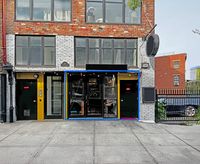 FOR LEASE
FOR LEASE
2,000 SF | 317 Union Avenue | Corner Turn-Key Restaurant with Glass Frontage for Sale
2,000 SF | 317 Union Avenue | Corner Turn-Key Restaurant with Glass Frontage for Sale
317 Union Avenue, Brooklyn, NY, 11211
- Retail
- for Lease
Unit 1
Title: 317 Union Avenue
Price: $9,000/per month
Size: 2,000 SF
City: Brooklyn
State: NY
Min Size: 2000
Zoning: R6, C2-3
Key Tag: Show
Listing Agent: Shlomi Bagdadi, Samuel Shouela
Vented: YES
Borough: Brooklyn
Neighborhood: Williamsburg
Zip Code: 11211
Price: $9,000/monthly
More Info FOR LEASE
FOR LEASE
500 SF | 221 Irving Avenue | Vented Retail Space with Glass Frontage for Lease
500 SF | 221 Irving Avenue | Vented Retail Space with Glass Frontage for Lease
221 Irving Avenue, Brooklyn, NY, 11237
- Retail
- for Lease
- 2 months flat
Unit 1
Title: 221 Irving Ave
Price: $4,750/per month
Size: 500 SF
City: Brooklyn
State: NY
Min Size: 500
Zoning: R6
Key Tag: Show
Listing Agent: Shlomi Bagdadi, Joey Sakkal, Leo Beda
Vented: YES
Borough: Brooklyn
Neighborhood: Bushwick
Zip Code: 11237
Price: $4,750/monthly
More Info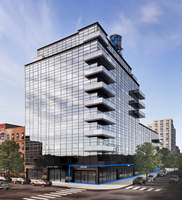 FOR LEASE
FOR LEASE
870 – 2,300 SF | 159 3rd Avenue | Prime Retail Opportunity in Brooklyn’s Newest Apartment Buildings
870 – 2,300 SF | 159 3rd Avenue | Prime Retail Opportunity in Brooklyn’s Newest Apartment Buildings
159 3rd Avenue, Brooklyn, NY, 11217
- Retail
- for Lease
- 2.5 months rent
Unit 1+
Title: Space A
Price: $80/SF per year
Size: 895 SF
Unit 2+
Title: Space B
Price: $80/SF per year
Size: 1,132 SF
Unit 3+
Title: Space C
Price: $80/SF per year
Size: 1,151 SF
Unit 4+
Title: Space D
Price: $80/SF per year
Size: 1,298 SF
Unit 5+
Title: Space E
Price: $80/SF per year
Size: 870 SF
Unit 6+
Title: Space A + Space B
Price: $90/SF per year
Size: 2,030 SF
Unit 7+
Title: Space A + Space B
Price: $90/SF per year
Size: 2,030 SF
Unit 8+
Title: Space A + Space B + Space C
Price: $90/SF per year
Size: 3,200 SF
Unit 9+
Title: Space C + Space D
Price: $90/SF per year
Size: 2,200 SF
Unit 10+
Title: Space B + Space C
Price: $80/SF per year
Size: 2,300 SF
Unit 11+
Title: Space A + Space B + Space C
Price: $90/SF per year
Size: 3,200 SF
City: Brooklyn
State: NY
Min Size: 870
Zoning: M1-4/R7X
Key Tag: Show
Listing Agent: Shlomi Bagdadi, Fredy Halabi, Freddy Bagdadi
Vented: NO
Borough: Brooklyn
Neighborhood: Gowanus
Zip Code: 11217
Price: $80-$90/SF per year
More Info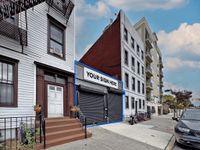 FOR LEASE
FOR LEASE
1,600 SF | 566 7th Avenue | Vented Stand Alone Retail Space for Lease
1,600 SF | 566 7th Avenue | Vented Stand Alone Retail Space for Lease
566 7th Avenue, Brooklyn, NY, 11215
- Retail
- for Lease
- 2 months
Unit 1
Title: 566 7th Ave
Price: $6,950/per month
Size: 1,600 SF
City: Brooklyn
State: NY
Min Size: 1600
Zoning: R6B
Key Tag: Show
Listing Agent: Shlomi Bagdadi, Leo Beda
Vented: YES
Borough: Brooklyn
Neighborhood: South Slope
Zip Code: 11215
Price: $6,950/monthly
More Info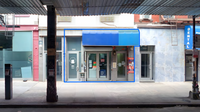 FOR LEASE
FOR LEASE
1,800 – 3,900 SF | 343 Broadway | Prime Williamsburg Dual-Space Leasing Opportunity
1,800 – 3,900 SF | 343 Broadway | Prime Williamsburg Dual-Space Leasing Opportunity
343 Broadway, Brooklyn, NY, 11211
- Retail
- for Lease
Unit 1+
Title: Space A - Ground Floor
Price: $6,000/per month
Size: 1,800 SF
Unit 2+
Title: Space B - Cellar
Price: $4,500/per month
Size: 2,100 SF
City: Brooklyn
State: NY
Min Size: 1800
Zoning: R6, C1-3
Key Tag: Show
Listing Agent: Shlomi Bagdadi, Freddy Bagdadi, Avi Saadia
Vented: CAN BE
Borough: Brooklyn
Neighborhood: Williamsburg
Zip Code: 11211
Price: $4,500-$6,000/monthly
More Info FOR LEASE
FOR LEASE
18,300 SF | 452 College Avenue | Turnkey School for Sublease
18,300 SF | 452 College Avenue | Turnkey School for Sublease
452 College Avenue, Bronx, NY, 10451
- Special Purpose
- for Lease
Unit 1
Title: 452 College Ave
Price: $45,000/per month
Size: 18,300 SF
City: Bronx
State: NY
Min Size: 18300
Zoning: R6
Key Tag: Show
Listing Agent: Shlomi Bagdadi
Vented: NO
Borough: The Bronx
Neighborhood: Mott Haven
Zip Code: 10451
Price: $45,000/monthly
More Info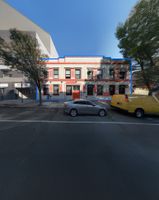 FOR LEASE
FOR LEASE
18,000 SF | 500 Courtlandt Avenue | School for Sublease
18,000 SF | 500 Courtlandt Avenue | School for Sublease
500 Courtlandt Avenue, Bronx, NY, 10455
- Special Purpose
- for Lease
Unit 1
Title: 500 Courtlandt Ave
Price: $47,000/per month
Size: 19,000 SF
City: Bronx
State: NY
Min Size: 19000
Zoning: R6, C2-4
Key Tag: Show
Listing Agent: Shlomi Bagdadi
Vented: NO
Borough: The Bronx
Neighborhood: Mott Haven
Zip Code: 10455
Price: $47,000/monthly
More Info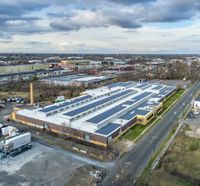 FOR LEASE
FOR LEASE
4,000 – 10,000 SF | 1400 East State Street | Office Space for Lease
4,000 – 10,000 SF | 1400 East State Street | Office Space for Lease
1400 East State Street, Hamilton, NJ, 08609
- Office
- for Lease
- 4.25%
Unit 1+
Title: Office - 4,000 SF
Price: $13/SF per year
Size: 4,000 SF
Unit 2+
Title: Office - 10,000 SF
Price: $13/SF per year
Size: 10,000 SF
City: Hamilton
State: NJ
Min Size: 4000
Zoning: I
Key Tag: Show
Listing Agent: Shlomi Bagdadi, Jack Sardar
Vented: NO
Borough: New Jersey
Neighborhood: Trenton
Zip Code: 08609
Price: $13/SF per year
More Info FOR LEASE
FOR LEASE
6,600 – 20,000 SF | 1726 McDonald Avenue | Prime Retail Office Space with Glass Frontage for Lease
6,600 – 20,000 SF | 1726 McDonald Avenue | Prime Retail Office Space with Glass Frontage for Lease
1726 McDonald Avenue, Brooklyn, NY, 11230
- Retail
- for Lease
- 5.00%
Unit 1+
Title: 2nd Floor
Price: $33/SF per year
Size: 13,000 SF
Unit 2+
Title: Ground Floor
Price: $45/SF per year
Size: 6,600 SF
City: Brooklyn
State: NY
Min Size: 6600
Zoning: M1-1
Key Tag: Show
Listing Agent: Shlomi Bagdadi, Leo Beda, Samuel Shouela
Vented: NO
Borough: Brooklyn
Neighborhood: Midwood
Zip Code: 11230
Price: $33-$45/SF per year
More Info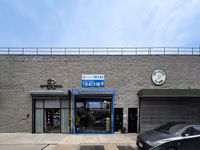 FOR LEASE
FOR LEASE
2,000 SF | 1763 McDonald Avenue | Newly Renovated Retail Space with High Ceilings for Lease
2,000 SF | 1763 McDonald Avenue | Newly Renovated Retail Space with High Ceilings for Lease
1763 McDonald Avenue, Brooklyn, NY, 11230
- Retail
- for Lease
- 5.00%
Unit 1
Title: 1763 McDonald Ave
Price: $7,500/per month
Size: 2,000 SF
City: Brooklyn
State: NY
Min Size: 2000
Zoning: M1-1, OP
Key Tag: Show
Listing Agent: Shlomi Bagdadi, Samuel Shouela
Vented: NO
Borough: Brooklyn
Neighborhood: Midwood
Zip Code: 11230
Price: $7,500/monthly
More Info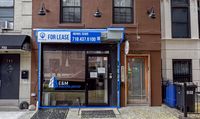 FOR LEASE
FOR LEASE
1,200 SF | 700 Saint Marks Avenue | Modern Built-Out Office Retail for Lease
1,200 SF | 700 Saint Marks Avenue | Modern Built-Out Office Retail for Lease
700 Saint Marks Ave, Brooklyn, NY, 11216
- Retail
- for Lease
- 3 months /4%
Unit 1
Title: 700 St Marks Ave
Price: $3,995/per month
Size: 1,200 SF
City: Brooklyn
State: NY
Min Size: 1200
Zoning: R6A, C2-4
Key Tag: Show
Listing Agent: Shlomi Bagdadi, Joey Sakkal
Vented: NO
Borough: Brooklyn
Neighborhood: Crown Heights
Zip Code: 11216
Price: $3,995/monthly
More Info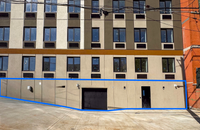 FOR LEASE
FOR LEASE
9,900 SF | 1451 Sutter Avenue | Newly Constructed Lot for Lease – Perfect for Parking or Storage!
9,900 SF | 1451 Sutter Avenue | Newly Constructed Lot for Lease – Perfect for Parking or Storage!
1451 Sutter Ave, Brooklyn, NY, 11208
- Industrial
- for Lease
- 5.00%
Unit 1+
Title: 1451 Sutter Ave
Price: $6,600/per month
Size: 9,900 SF
Unit 2+
Title: GROUND FLOOR
Price: $9,750/per month
Size: 900 SF
City: Brooklyn
State: NY
Min Size: 900
Zoning: R6A
Key Tag: Show
Listing Agent: Shlomi Bagdadi, Samuel Shouela
Vented: NO
Borough: Brooklyn
Neighborhood: East New York
Zip Code: 11208
Price: $6,600-$9,750/monthly
More Info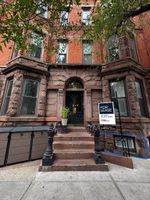 FOR LEASE
FOR LEASE
600 SF | 64 7th Avenue | Vanilla Box Office Space with Private Entrance for Lease
600 SF | 64 7th Avenue | Vanilla Box Office Space with Private Entrance for Lease
64 7th Ave, Brooklyn, NY, 11217
- Office
- for Lease
- 2 months colect 1 month
Unit 1
Title: 64 7th Ave
Price: $2,750/per month
Size: 600 SF
City: Brooklyn
State: NY
Min Size: 600
Zoning: R6A
Key Tag: Show
Listing Agent: Shlomi Bagdadi, Joey Sakkal
Vented: NO
Borough: Brooklyn
Neighborhood: Park Slope
Zip Code: 11217
Price: $2,750/monthly
More Info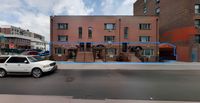 FOR LEASE
FOR LEASE
1,800 – 5,500 SF | 78-03 41st Avenue | Divisible Community Facility for Lease in Elmhurst
1,800 – 5,500 SF | 78-03 41st Avenue | Divisible Community Facility for Lease in Elmhurst
78-03 41st Avenue, Elmhurst, NY, 11373
- Office
- for Lease
- 4.0%
Unit 1+
Title: TOTAL SPACE
Price: $50/SF per year
Size: 5,500 SF
Unit 2+
Title: SPACE A
Price: $50/SF per year
Size: 1,800 SF
Unit 3+
Title: SPACE B
Price: $50/SF per year
Size: 1,800 SF
Unit 4+
Title: SPACE C
Price: $50/SF per year
Size: 1,800 SF
City: Elmhurst
State: NY
Min Size: 1800
Zoning: R5
Key Tag: Show
Listing Agent: Shlomi Bagdadi, Richard Babeck
Vented: NO
Borough: Queens
Neighborhood: Elmhurst
Zip Code: 11373
Price: $50/SF per year
More Info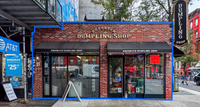 FOR LEASE
FOR LEASE
1,000 SF | 131 1st Avenue | 2nd Generation Turn-Key Restaurant for Lease with QSR Opportunity
1,000 SF | 131 1st Avenue | 2nd Generation Turn-Key Restaurant for Lease with QSR Opportunity
131 1st Avenue, New York, NY, 10003
- Retail
- for Lease
- Sublessor agrees to pay Listing Broker a commission of either the greater of (a) Ten percent (10%) of the Purchase Price/Key Money, if any, OR (b)(i) Two (2) months commission based on the first year rent in the event the Listing Broker is sole broker in the transaction, or (ii) when working with a cooperating outside broker, Three (3) months aggregate commission based on the first year rent, fifty percent (50%) of which shall be paid by Listing Broker to such outside broker
Unit 1
Title: 131 1st Ave
Price: $206/SF per year
Size: 1,000 SF
City: New York
State: NY
Min Size: 1000
Zoning: R7A, C1-5
Key Tag: Show
Listing Agent: Shlomi Bagdadi, Joy Fescine
Vented: YES
Borough: Manhattan
Neighborhood: East Village
Zip Code: 10003
Price: $206/SF per year
More Info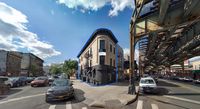 FOR SALE
FOR SALE
5,250 SF | Corner Mixed-Use Property for Sale with 6 Commercial Units
5,250 SF | Corner Mixed-Use Property for Sale with 6 Commercial Units
6326 New Utrecht Avenue, Brooklyn, NY, 11219
- Retail
- for Sale
- 4.00%
City: Brooklyn
State: NY
Min Size: 5250
Zoning: M1-1
Key Tag: Show
Listing Agent: Shlomi Bagdadi, Jack Sardar
Vented: NO
Borough: Brooklyn
Neighborhood: Borough Park
Zip Code: 11219
Sales Price : $3,150,000
More Info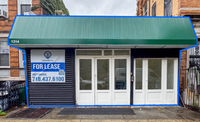 FOR LEASE
FOR LEASE
550 SF | 1314 Bergen Street | Vanilla Box Retail Office Space with Glass Frontage for Lease
550 SF | 1314 Bergen Street | Vanilla Box Retail Office Space with Glass Frontage for Lease
1314 Bergen Street, Brooklyn, NY, 11213
- Retail
- for Lease
- 2 months flat%
Unit 1
Title: 1314 Bergen St
Price: $3,250/per month
Size: 550 SF
City: Brooklyn
State: NY
Min Size: 550
Zoning: R6, C1-3
Key Tag: Show
Listing Agent: Shlomi Bagdadi, Joey Sakkal
Vented: NO
Borough: Brooklyn
Neighborhood: Crown Heights
Zip Code: 11213
Price: $3,250/monthly
More Info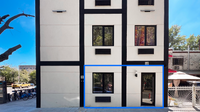 FOR LEASE
FOR LEASE
1,500 SF | 1567 Wilkins Avenue | Vanilla Box Retail Space with Glass Frontage for Lease
1,500 SF | 1567 Wilkins Avenue | Vanilla Box Retail Space with Glass Frontage for Lease
1567 Wilkins Avenue, Bronx, NY, 10460
- Retail
- for Lease
- 3 months
Unit 1+
Title: 500 SF
Price: $2,750/SF per year
Size: 500 SF
Unit 2+
Title: Total Space
Price: $3,500/SF per year
Size: 1,500 SF
City: Bronx
State: NY
Min Size: 500
Zoning: R7-1, C2-4
Key Tag: Show
Listing Agent: Shlomi Bagdadi, Joey Sakkal
Vented: NO
Borough: The Bronx
Neighborhood: Crotona Park East
Zip Code: 10460
Price: $2,750-$3,500/SF per year
More Info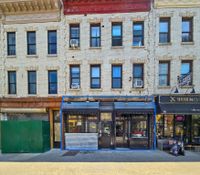 FOR LEASE
FOR LEASE
1,900 SF | 781 Franklin Avenue | Turnkey Restaurant & Bar with 1,500 SF Usable Basement for Lease
1,900 SF | 781 Franklin Avenue | Turnkey Restaurant & Bar with 1,500 SF Usable Basement for Lease
781 Franklin Avenue, Brooklyn, NY, 11238
- Retail
- for Lease
Unit 1
Title: 781 Franklin Ave
Price: $17,950/per month
Size: 1,900 SF
City: Brooklyn
State: NY
Min Size: 1900
Zoning: R7A, C2-4
Key Tag: Show
Listing Agent: Shlomi Bagdadi, Freddy Bagdadi, Joy Fescine
Vented: YES
Borough: Brooklyn
Neighborhood: Crown Heights
Zip Code: 11238
Price: $17,950/monthly
More Info FOR LEASE
FOR LEASE
1,100 SF | 1420 Nostrand Avenue | Vented Retail with Glass Frontage for Lease
1,100 SF | 1420 Nostrand Avenue | Vented Retail with Glass Frontage for Lease
1420 Nostrand Avenue, Brooklyn, NY, 11226
- Retail
- for Lease
- i. For leases that are 3 Years or less: two (2) months rent ii. For leases that are 3-5 Years: two and one half (2.5) months rent iii. For leases that are 6-10 years four (4%) percent of the Fixed Rent (as defined below) for the term of the lease.
Unit 1
Title: 1420 Nostrand Avenue
Price: $6,800/per month
Size: 1,100 SF
City: Brooklyn
State: NY
Min Size: 1100
Zoning: R6, C1-3
Key Tag: Show
Listing Agent: Shlomi Bagdadi, Maurice Amar
Vented: YES
Borough: Brooklyn
Neighborhood: Little Caribbean
Zip Code: 11226
Price: $6,800/monthly
More Info FOR LEASE
FOR LEASE
1,600 SF | 862 Dekalb Avenue | Renovated Retail Space for Lease
1,600 SF | 862 Dekalb Avenue | Renovated Retail Space for Lease
862 DeKalb Avenue, Brooklyn, NY, 11221
- Retail
- for Lease
- 2.5 months or 4%
Unit 1
Title: 862 Dekalb Ave
Price: $6,500/per month
Size: 1,600 SF
City: Brooklyn
State: NY
Min Size: 1600
Key Tag: Show
Listing Agent: Shlomi Bagdadi, Joey Bouzaglou
Vented: NO
Borough: Brooklyn
Neighborhood: Bed-Stuy
Zip Code: 11221
Price: $6,500/monthly
More Info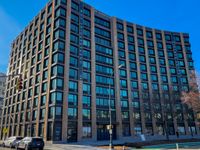 FOR LEASE
FOR LEASE
15,370 SF | 1 Park Point | Double Height Retail/Education Space
15,370 SF | 1 Park Point | Double Height Retail/Education Space
1 Park Point, Brooklyn, NY, 11218
- Retail
- for Lease
Unit 1+
Title: Basement 11,494 SF
Price: $100/SF per year
Size: 11,500 SF
Unit 2+
Title: total space
Price: $45/SF per year
Size: 15,370 SF
City: Brooklyn
State: NY
Min Size: 11500
Listing Agent: Shlomi Bagdadi, Fredy Halabi, Joy Fescine
Zip Code: 11218
Price: $45-$100/SF per year
More Info FOR LEASE
FOR LEASE
1,000 – 2,000 SF | 1326 Ocean Avenue | Built Out Office Space for Lease
1,000 – 2,000 SF | 1326 Ocean Avenue | Built Out Office Space for Lease
1326 Ocean Avenue, Brooklyn, NY, 11230
- Office
- for Lease
- For leases that are up to 5 Years: Owner agrees to pay Broker, the greater of 2.5 Months Rent OR Four (4%) of the aggregated gross rent amount of the initial lease term, as a commission for procuring a Tenant. Full Commission is due and payable upon lease execution. 2. For leases that are 5 years and up. Owner agrees to pay Broker Four (4%) of the aggregated gross rent amount of the initial lease term for procuring a Tenant as follows: a. 50% upon lease execution. b. 50% within up to 6 months of lease execution date, payable in equal monthly installments. 3. Renewal Options: Broker shall not be paid on renewal options.
Unit 1+
Title: SPACE A + SPACE B
Price: $4,850/per month
Size: 2,000 SF
Unit 2+
Title: SPACE A
Price: $2,400/per month
Size: 1,000 SF
Unit 3+
Title: SPACE B
Price: $2,400/per month
Size: 1,000 SF
City: Brooklyn
State: NY
Min Size: 1000
Zoning: R7A
Key Tag: Show
Listing Agent: Shlomi Bagdadi, Joey Sakkal
Borough: Brooklyn
Neighborhood: Flatbush
Zip Code: 11230
Price: $2,400-$4,850/monthly
More Info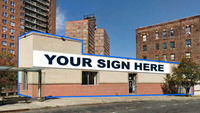 FOR LEASE
FOR LEASE
1,550 – 3,200 SF | 1662 Saint Nicholas Avenue | Prime Corner Retail Spaces with 60 FT Frontage for Lease
1,550 – 3,200 SF | 1662 Saint Nicholas Avenue | Prime Corner Retail Spaces with 60 FT Frontage for Lease
1662 Saint Nicholas Avenue, New York, NY, 10040
- Retail
- for Lease
- See agreement
Unit 1
Title: Space A+B: 3,200 SF
Price: $13,500/per month
Size: 3,200 SF
City: New York
State: NY
Min Size: 3200
Key Tag: Show
Listing Agent: Shlomi Bagdadi, Freddy Bagdadi
Borough: Manhattan
Neighborhood: Washington Heights
Zip Code: 10040
Price: $13,500/monthly
More Info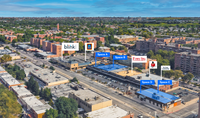 FOR LEASE
FOR LEASE
2,000 – 14,500 SF | 3779-3861 Nostrand Avenue | Retail Spaces for Lease in Nostrand Plaza
2,000 – 14,500 SF | 3779-3861 Nostrand Avenue | Retail Spaces for Lease in Nostrand Plaza
3779-3861 Nostrand Avenue, Brooklyn, NY, 11235
- Retail
- for Lease
- 3.20%
Unit 1+
Title: 3831 Nostrand Ave
Size: 24,000 SF
Unit 2+
Title: Space A
Price: $78/SF per year
Size: 3,000 SF
Unit 3+
Title: Space B
Price: $78/SF per year
Size: 12,000 SF
Unit 4+
Title: Space C
Price: $78/SF per year
Size: 10,000 SF
Unit 5+
Title: Space D
Price: $78/SF per year
Size: 2,500 SF
Unit 6+
Title: Space E
Price: $78/SF per year
Size: 4,500 SF
Unit 7+
Title: Space D + Space E
Price: $78/SF per year
Size: 7,000 SF
Unit 8+
Title: Space A + Space B
Price: $78/SF per year
Size: 15,000 SF
Unit 9+
Title: Space A - Inline Space
Price: $55/SF per year
Size: 2,000 SF
Unit 10+
Title: SPACE B - inline
Price: $78/SF per year
Size: 2,000 SF
Unit 11+
Title: SPACE C - Parcel Building:
Price: $78/SF per year
Size: 6,600 SF
Unit 12+
Title: Space D - Former Diner | Parcel
Price: $78/SF per year
Size: 4,400 SF
City: Brooklyn
State: NY
Min Size: 2000
Zoning: R3-2, C2-2
Key Tag: Show
Listing Agent: Shlomi Bagdadi, Freddy Bagdadi, Avi Saadia
Vented: NO
Borough: Brooklyn
Neighborhood: Sheepshead Bay
Zip Code: 11235
Price: $55/sf + 23NNN
More Info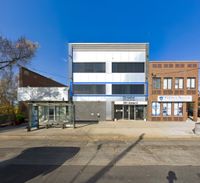 FOR LEASE
FOR LEASE
3,000 SF | 3041 Avenue U | Built Out Medical Office for Lease
3,000 SF | 3041 Avenue U | Built Out Medical Office for Lease
3041 Avenue U, Brooklyn, NY, 11229
- Office
- for Lease
- 4.00%
Unit 1
Title: 3041 Avenue U
Price: $8,500/per month
Size: 3,000 SF
City: Brooklyn
State: NY
Min Size: 3000
Zoning: R4, C1-2
Key Tag: Show
Listing Agent: Shlomi Bagdadi, Jack Sardar
Vented: NO
Borough: Brooklyn
Neighborhood: Sheepshead Bay
Zip Code: 11229
Price: $8,500/monthly
More Info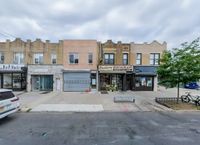 FOR LEASE
FOR LEASE
2,000 SF | 7504 13th Avenue | Turnkey Restaurant with Liquor License for Lease
2,000 SF | 7504 13th Avenue | Turnkey Restaurant with Liquor License for Lease
7504 13th Ave, Brooklyn, NY, 11228
- Retail
- for Lease
Unit 1
Title: 7504 13th Ave
Size: 2,000 SF
City: Brooklyn
State: NY
Min Size: 2000
Zoning: R5B
Key Tag: Show
Listing Agent: Shlomi Bagdadi, Maurice Amar
Vented: YES
Borough: Brooklyn
Neighborhood: Dyker Heights
Zip Code: 11228
Price: Call For Price
More Info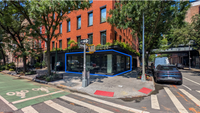 FOR LEASE
FOR LEASE
3,600 SF | 500 W 22nd Street | Bi-Level Retail Space with 100 FT of Frontage for Lease
3,600 SF | 500 W 22nd Street | Bi-Level Retail Space with 100 FT of Frontage for Lease
500 West 22nd Street, New York, NY, 10011
- Retail
- for Lease
- 3.40%
Unit 1
Title: 500 W 22nd St - total space
Price: $24,000/per month
Size: 3,600 SF
City: New York
State: NY
Min Size: 3600
Key Tag: Show
Listing Agent: Shlomi Bagdadi, Freddy Bagdadi
Vented: NO
Borough: Manhattan
Neighborhood: Chelsea
Zip Code: 10011
Price: $24,000/monthly
More Info FOR LEASE
FOR LEASE
610 SF | 755 Washington Avenue | Newly Constructed Retail Space with Glass Frontage for Lease
610 SF | 755 Washington Avenue | Newly Constructed Retail Space with Glass Frontage for Lease
775 Washington Ave, Brooklyn, NY, 11238
- Retail
- for Lease
- 4.20%
Unit 1
Title: 755 Washington Ave
Price: $5,200/per month
Size: 610 SF
City: Brooklyn
State: NY
Min Size: 610
Zoning: R7A, C1-4
Key Tag: Show
Listing Agent: Shlomi Bagdadi, Fredy Halabi, Michael Elkharrat
Vented: NO
Borough: Brooklyn
Neighborhood: Prospect Heights
Zip Code: 11238
Price: $5,200/monthly
More Info FOR LEASE
FOR LEASE
Up to 10,000 SF | 271-273 Brighton Beach Avenue | Flexible Retail Space
Up to 10,000 SF | 271-273 Brighton Beach Avenue | Flexible Retail Space
271-273 Brighton Beach Avenue, Brooklyn, NY, 11235
- Retail
- for Lease
- n/a
Unit 1+
Title: Total Space
Price: $100/SF per year
Size: 10,000 SF
Unit 2+
Title: Smallest Division
Price: $100/SF per year
Size: 3,500 SF
City: Brooklyn
State: NY
Min Size: 3500
Key Tag: Show
Listing Agent: Shlomi Bagdadi, Maurice Amar, Joy Fescine
Vented: CAN BE
Borough: Brooklyn
Neighborhood: Brighton Beach
Zip Code: 11235
Price: $100/SF per year
More Info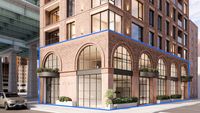 FOR LEASE
FOR LEASE
2,500 – 5,000 SF | 63 South 6th Street | Unique Retail Spaces in Williamsburg for Lease
2,500 – 5,000 SF | 63 South 6th Street | Unique Retail Spaces in Williamsburg for Lease
63 South 6th Street, Brooklyn, NY, 11249
- Retail
- for Lease
- 5% (upto 8% with corporate signature with value over $10mm)
Unit 1+
Title: GROUND FLOOR
Price: $90/SF per year
Size: 2,500 SF
Unit 2+
Title: 2ND FLOOR
Price: $75/SF per year
Size: 2,500 SF
City: Brooklyn
State: NY
Min Size: 2500
Zoning: C4-3
Key Tag: Show
Listing Agent: Shlomi Bagdadi, Richard Babeck
Vented: NO
Borough: Brooklyn
Neighborhood: Williamsburg
Zip Code: 11249
Price: $75-$90/SF per year
More Info FOR SALE
FOR SALE
3703 Church Avenue | Legal Mixed-Use Building for Sale in East Flatbush – 1 Store & 1 Apartment
3703 Church Avenue | Legal Mixed-Use Building for Sale in East Flatbush – 1 Store & 1 Apartment
3703 Church Avenue, Brooklyn, NY, 11214
- Retail
- for Sale
- 4% CO BROKE AND 3% DIRECT
City: Brooklyn
State: NY
Min Size: 2000
Zoning: R5 / C2-2
Key Tag: Show
Listing Agent: Shlomi Bagdadi, Jack Sardar
Vented: NO
Borough: Brooklyn
Neighborhood: East Flatbush
Zip Code: 11214
Sales Price : $1,100,000
More Info FOR SALE
FOR SALE
88-19 76th Avenue | 13,000 SF Warehouse for Sale with High Ceilings Delivered Vacant
88-19 76th Avenue | 13,000 SF Warehouse for Sale with High Ceilings Delivered Vacant
88-19 76th Avenue, Glendale, NY, 11385
- Industrial
- for Sale
- 4.0%
City: Glendale
State: NY
Min Size: 12880
Zoning: M1-2
Key Tag: Show
Listing Agent: Shlomi Bagdadi, Jack Sardar
Vented: NO
Borough: Queens
Neighborhood: Glendale
Zip Code: 11385
Sales Price : $3,600,000
More Info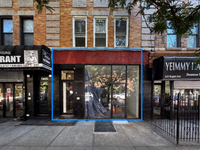 FOR LEASE
FOR LEASE
1,000 SF | 639 Rogers Avenue | Newly Renovated Retail Space with Glass Frontage for Lease
1,000 SF | 639 Rogers Avenue | Newly Renovated Retail Space with Glass Frontage for Lease
639 Rogers Ave, Brooklyn, NY, 11226
- Retail
- for Lease
- 5 year- 2.5 months 10 yr- 4.5 months
Unit 1
Title: 639 Rogers Ave
Price: $5,000/per month
Size: 1,000 SF
City: Brooklyn
State: NY
Min Size: 1000
Zoning: R6
Key Tag: Show
Listing Agent: Shlomi Bagdadi, Samuel Shouela
Vented: NO
Borough: Brooklyn
Neighborhood: Prospect Lefferts Garden
Zip Code: 11226
Price: $5,000/monthly
More Info FOR SALE
FOR SALE
142 W 131st Street | 32 X 100 Development Site with R7-2 Zoning & Deed Restriction!
142 W 131st Street | 32 X 100 Development Site with R7-2 Zoning & Deed Restriction!
142 W 131st St, New York, NY, 10027
- Land
- for Sale
- 4.00%
City: New York
State: NY
Min Size: 3197
Zoning: R7-2
Key Tag: Show
Listing Agent: Shlomi Bagdadi, Jack Sardar
Vented: NO
Borough: Manhattan
Neighborhood: Harlem
Zip Code: 10027
Sales Price : $1,499,000
More Info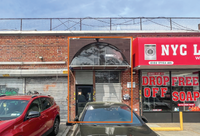 FOR LEASE
FOR LEASE
1,200 SF | 2102 Utica Avenue | Newly Renovated Retail/Office Space for Lease
1,200 SF | 2102 Utica Avenue | Newly Renovated Retail/Office Space for Lease
2102 Utica Avenue, Brooklyn, NY, 11234
- Retail
- for Lease
Unit 1+
Title: Space B
Price: $3,500/SF per year
Size: 1,200 SF
Unit 2+
Title: 2102 Utica Avenue
Price: $3,450/per month
Size: 1,200 SF
City: Brooklyn
State: NY
Min Size: 1200
Zoning: R3-2
Key Tag: Show
Listing Agent: Shlomi Bagdadi, Joey Bouzaglou
Vented: NO
Borough: Brooklyn
Neighborhood: Flatlands
Zip Code: 11234
Price: $3,450/monthly
More Info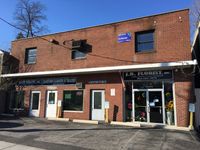 FOR LEASE
FOR LEASE
800 – 1,000 SF | 70 E Main Street | Built-Out 2nd Floor Medical Offices for Lease
800 – 1,000 SF | 70 E Main Street | Built-Out 2nd Floor Medical Offices for Lease
70 E Main St, Elmsford, NY, 10523
- Retail
- for Lease
- 2.5 months
Unit 1+
Title: Space A
Price: $1,500/per month
Size: 800 SF
Unit 2+
Title: Space B
Price: $1,800/per month
Size: 1,000 SF
City: Elmsford
State: NY
Min Size: 800
Zoning: B
Key Tag: Show
Listing Agent: Shlomi Bagdadi, Michael Elkharrat
Vented: NO
Neighborhood: Elmsford
Zip Code: 10523
Price: $1,500-$1,800/monthly
More Info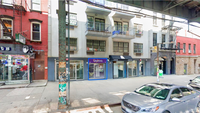 FOR LEASE
FOR LEASE
1,500 SF | 409 Broadway | Retail Space with Basement & Glass Frontage for Lease
1,500 SF | 409 Broadway | Retail Space with Basement & Glass Frontage for Lease
409 Broadway, Brooklyn, NY, 11211
- Retail
- for Lease
- 2.5 months
Unit 1
Title: 409 Broadway
Price: $8,000/per month
Size: 1,500 SF
City: Brooklyn
State: NY
Min Size: 1500
Zoning: R6
Key Tag: Show
Listing Agent: Shlomi Bagdadi, Freddy Bagdadi
Vented: NO
Borough: Brooklyn
Neighborhood: Williamsburg
Zip Code: 11211
Price: $8,000/monthly
More Info FOR LEASE
FOR LEASE
5,000 SF | 1894 Flatbush Avenue | 2-Story Building with GF Built-Out Retail for Lease
5,000 SF | 1894 Flatbush Avenue | 2-Story Building with GF Built-Out Retail for Lease
1894 Flatbush Ave, Brooklyn, NY, 11210
- Retail
- for Lease
- 5.0%
Unit 1
Title: 1894 Flatbush Ave
Price: $45/SF per year
Size: 5,000 SF
City: Brooklyn
State: NY
Min Size: 5000
Zoning: R5
Key Tag: Show
Listing Agent: Shlomi Bagdadi, Joey Sakkal
Vented: NO
Borough: Brooklyn
Neighborhood: East Midwood
Zip Code: 11210
Price: $45/SF per year
More Info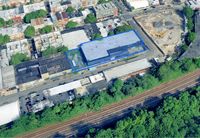 FOR SALE
FOR SALE
22,400 SF | 333 Moffat Street | Vacant Warehouse With Parking For Sale
22,400 SF | 333 Moffat Street | Vacant Warehouse With Parking For Sale
333 Moffat Street, Brooklyn, NY, 11237
- Industrial
- for Sale
- 3%
City: Brooklyn
State: NY
Min Size: 22400
Zoning: M1-1
Key Tag: Show
Listing Agent: Shlomi Bagdadi, Fred Betesh, Jack Sardar
Vented: NO
Borough: Brooklyn
Neighborhood: Bushwick
Zip Code: 11237
Sales Price : $11,900,000
More Info FOR LEASE
FOR LEASE
3,400 SF | 106-02 Northern Blvd | Built Out Fitness Facility for Lease
3,400 SF | 106-02 Northern Blvd | Built Out Fitness Facility for Lease
106-02 Northern Blvd, Queens, NY, 11368
- Retail
- for Lease
- 5%
Unit 1
Title: 106-02 Northern Blvd
Price: $25/SF per year
Size: 3,400 SF
City: Queens
State: NY
Min Size: 3400
Zoning: R6A
Key Tag: Show
Listing Agent: Shlomi Bagdadi, Richard Babeck
Vented: NO
Borough: Queens
Neighborhood: Corona
Zip Code: 11368
Price: $25/SF per year
More Info FOR SALE
FOR SALE
2,700 SF | 692 Coney Island Avenue | Building for Sale with Vacant Retail Opportunity
2,700 SF | 692 Coney Island Avenue | Building for Sale with Vacant Retail Opportunity
692 Coney Island Avenue, Brooklyn, NY, 11218
- Retail
- for Sale
- 3%
City: Brooklyn
State: NY
Min Size: 2700
Zoning: C8-2
Key Tag: Show
Listing Agent: Shlomi Bagdadi, Jack Sardar
Vented: NO
Borough: Queens
Neighborhood: Kensington
Zip Code: 11218
Sales Price : $1,600,000
More Info FOR LEASE
FOR LEASE
8,100 SF | 601 8th Ave | Lower Level Retail Space for Lease
8,100 SF | 601 8th Ave | Lower Level Retail Space for Lease
601 8th Ave, New York, NY, 10018
- Retail
- for Lease
Unit 1
Title: 601 8th Ave
Price: $55/SF per year
Size: 8,100 SF
City: New York
State: NY
Min Size: 8100
Zoning: C6-4
Listing Agent: Shlomi Bagdadi
Zip Code: 10018
Price: $55/SF per year
More Info FOR LEASE
FOR LEASE
600 SF | 516 E 147th Street | Community Facility/Office Space With Glass Frontage For Lease
600 SF | 516 E 147th Street | Community Facility/Office Space With Glass Frontage For Lease
516 E 147th St, Bronx, NY, 10455
- Office
- for Lease
Unit 1
Title: 516 E 147th Street
Price: $3,000/per month
Size: 600 SF
City: Bronx
State: NY
Min Size: 600
Zoning: R6
Key Tag: Show
Listing Agent: Shlomi Bagdadi, Joey Sakkal
Vented: NO
Borough: The Bronx
Neighborhood: South Bronx
Zip Code: 10455
Price: $3,000/monthly
More Info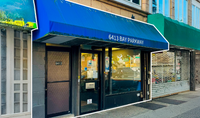 FOR LEASE
FOR LEASE
1,700 SF | 6413 Bay Parkway | Built Out Medical Spaces for Lease
1,700 SF | 6413 Bay Parkway | Built Out Medical Spaces for Lease
6413 Bay Parkway, Brooklyn, NY, 11204
- Retail
- for Lease
- 2 months
Unit 1+
Title: 6413 Bay Parkway
Price: $5,000/per month
Size: 1,700 SF
Unit 2+
Title: 6413 Bay Parkway
Price: $5,000/per month
Size: 1,700 SF
City: Brooklyn
State: NY
Min Size: 1700
Zoning: R6A, C2-3
Key Tag: Show
Listing Agent: Shlomi Bagdadi, Joey Sakkal
Vented: NO
Borough: Brooklyn
Neighborhood: Bensonhurst
Zip Code: 11204
Price: $5,000/monthly
More Info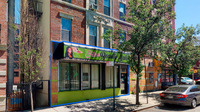 FOR LEASE
FOR LEASE
600 SF | 67 Macombs Place | Retail Space With 15 Feet of Glass Frontage For Lease
600 SF | 67 Macombs Place | Retail Space With 15 Feet of Glass Frontage For Lease
67 Macombs Pl, New York, NY, 10039
- Retail
- for Lease
Unit 1+
Title: 67 Macombs Pl
Price: $2,750/per month
Size: 600 SF
Unit 2+
Title: 67 Macombs Pl
Price: $2,750/per month
Size: 600 SF
City: New York
State: NY
Min Size: 600
Zoning: R7-2
Key Tag: Show
Listing Agent: Shlomi Bagdadi, Avi Saadia
Vented: NO
Borough: Manhattan
Neighborhood: Harlem
Zip Code: 10039
Price: $2,750/monthly
More Info FOR LEASE
FOR LEASE
2,400 SF | 31-57 Vernon Boulevard | Built-Out F&B Space with Mezzanine for Lease
2,400 SF | 31-57 Vernon Boulevard | Built-Out F&B Space with Mezzanine for Lease
31-57 Vernon Boulevard, Queens, NY, 11106
- Retail
- for Lease
Unit 1
Title: Ground + Mezzanine
Price: $7,250/SF per year
Size: 2,400 SF
City: Queens
State: NY
Min Size: 2400
Zoning: R7A, C1-3
Key Tag: Show
Listing Agent: Shlomi Bagdadi, Richard Babeck
Vented: NO
Borough: Queens
Neighborhood: Astoria
Zip Code: 11106
Price: $7,250/SF per year
More Info FOR LEASE
FOR LEASE
6,250 RSF | 148 39th Street | 3rd Floor Office Space For Sublease
6,250 RSF | 148 39th Street | 3rd Floor Office Space For Sublease
148 39th Street, Brooklyn, NY, 11232
- Office
- for Lease
Unit 1
Title: 148 39th Street
Price: $19,000/per month
Size: 6,250 SF
City: Brooklyn
State: NY
Min Size: 6250
Zoning: M3-1
Key Tag: Show
Listing Agent: Shlomi Bagdadi
Vented: NO
Borough: Brooklyn
Neighborhood: Sunset Park
Zip Code: 11232
Price: $19,000/monthly
More Info FOR LEASE
FOR LEASE
3,200 SF | 1133 Broadway | Beautifully Built-Out Office For Sublease
3,200 SF | 1133 Broadway | Beautifully Built-Out Office For Sublease
1133 Broadway, New York, NY, 10010
- Office
- for Lease
Unit 1
Title: 1133 Broadway
Price: $19,000/per month
Size: 3,200 SF
City: New York
State: NY
Min Size: 3200
Zoning: C5-2
Listing Agent: Shlomi Bagdadi
Vented: NO
Borough: Manhattan
Neighborhood: FiDi
Zip Code: 10010
Price: $19,000/monthly
More Info FOR SALE
FOR SALE
820-822 Utica Avenue | Two Buildings For Sale – 2 Retail Stores, 3 Apartments, & 1 Office
820-822 Utica Avenue | Two Buildings For Sale – 2 Retail Stores, 3 Apartments, & 1 Office
820-822 Utica Avenue, Brooklyn, NY, 11203
- Office
- for Sale
- 3.50%
City: Brooklyn
State: NY
Min Size: 4000
Key Tag: Show
Listing Agent: Shlomi Bagdadi, Jack Sardar
Vented: NO
Borough: Brooklyn
Neighborhood: East Flatbush
Zip Code: 11203
Sales Price : $2,200,000
More Info FOR LEASE
FOR LEASE
7,400 SF | 180 Throop Avenue | FRESH Program Retail Space for Lease
7,400 SF | 180 Throop Avenue | FRESH Program Retail Space for Lease
180 Throop Avenue, Brooklyn, NY, 11206
- Retail
- for Lease
Unit 1+
Title: 7,400 SF | 180 Throop Ave | FRES
Price: $26,000/per month
Size: 7,400 SF
Unit 2+
Title: 180 Throop Ave
Price: $55/SF per year
Size: 7,400 SF
City: Brooklyn
State: NY
Min Size: 7400
Zoning: R6A
Key Tag: Show
Listing Agent: Shlomi Bagdadi, Freddy Bagdadi
Vented: NO
Borough: Brooklyn
Neighborhood: Bed-Stuy
Zip Code: 11206
Price: $55/sf
More Info FOR LEASE
FOR LEASE
1,500 – 4,000 SF | 570 Fulton Street | Newly Developed Retail Space In Prime Downtown Brooklyn For Lease
1,500 – 4,000 SF | 570 Fulton Street | Newly Developed Retail Space In Prime Downtown Brooklyn For Lease
570 Fulton St, Brooklyn, NY, 11217
- Retail
- for Lease
Unit 1
Title: SPACE A
Price: $100/SF per year
Size: 2,500 SF
City: Brooklyn
State: NY
Min Size: 2500
Zoning: C6-9
Key Tag: Show
Listing Agent: Shlomi Bagdadi, Leo Beda
Vented: NO
Borough: Brooklyn
Neighborhood: Downtown Brooklyn
Zip Code: 11217
Price: $100/SF per year
More Info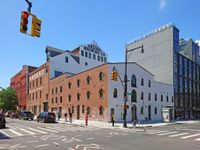 FOR LEASE
FOR LEASE
1,000 – 7,000 SF | 620 Franklin Ave | Multiple Retail Spaces for Lease
1,000 – 7,000 SF | 620 Franklin Ave | Multiple Retail Spaces for Lease
620 Franklin Ave, Brooklyn, NY, 11238
- Retail
- for Lease
Unit 1+
Title: Space A
Price: $6,750/per month
Size: 1,000 SF
Unit 2+
Title: Space B
Price: $5,750/per month
Size: 1,400 SF
Unit 3+
Title: Space C
Price: $6,200/per month
Size: 3,400 SF
Unit 4+
Title: Space D
Price: $40,000/per month
Size: 2,200 SF
Unit 5+
Title: Space E
Price: $8,750/per month
Size: 1,200 SF
Unit 6+
Title: Space F
Price: $45/SF per year
Size: 3,600 SF
Unit 7+
Title: Space B-C
Size: 7,000 SF
City: Brooklyn
State: NY
Min Size: 1000
Zoning: R7A, C2-4
Listing Agent: Shlomi Bagdadi
Zip Code: 11238
Price: $5,750-$40,000/monthly
More Info FOR LEASE
FOR LEASE
350 – 500 SF | 850 Clarkson Avenue | Brand New Corner Development Retail Spaces For Lease
350 – 500 SF | 850 Clarkson Avenue | Brand New Corner Development Retail Spaces For Lease
850 Clarkson Ave, Brooklyn, NY, 11203
- Office
- for Lease
- 3 Months
Unit 1+
Title: Space A: Inline E 51ST St
Price: $2,000/per month
Size: 500 SF
Unit 2+
Title: Space B: Inline E 51st St (Clos
Price: $3,000/per month
Size: 500 SF
Unit 3+
Title: Space A + Space B
Price: $4,500/per month
Size: 1,200 SF
Unit 4+
Title: Space C
Price: $2,000/per month
Size: 350 SF
Unit 5+
Title: Space D: (Corner of Clarkson)
Price: $3,000/per month
Size: 350 SF
Unit 6+
Title: Unit 2 (Inline on Clarkson)
Price: $3,500/per month
Size: 500 SF
Unit 7+
Title: Space D + E
Price: $3,500/per month
Size: 850 SF
Unit 8+
Title: Unit 1
Price: $2,000/per month
Size: 350 SF
Unit 9+
Title: SPACE B - Inline E 51st St (Clos
Price: $3,000/per month
Size: 700 SF
City: Brooklyn
State: NY
Min Size: 350
Zoning: R6
Key Tag: Show
Listing Agent: Shlomi Bagdadi, Maurice Amar
Vented: NO
Borough: Brooklyn
Neighborhood: Prospect Lefferts Garden
Zip Code: 11203
Price: $2,000-$4,500/monthly
More Info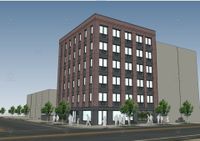 FOR LEASE
FOR LEASE
1,200 SF | 510 East 148th St | Newly Developed, Move-in Ready Office Space With Elevator for Lease
1,200 SF | 510 East 148th St | Newly Developed, Move-in Ready Office Space With Elevator for Lease
510 East 148th Street, Bronx, NY, 10455
- Office
- for Lease
Unit 1+
Title: 510 East 148th St
Price: $1,500/per month
Size: 1,200 SF
Unit 2+
Title: 510 East 148th St
Price: $1,500/per month
Size: 1,200 SF
City: Bronx
State: NY
Min Size: 1200
Listing Agent: Shlomi Bagdadi
Zip Code: 10455
Price: $1,500/monthly
More Info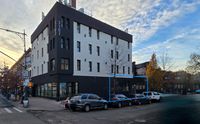 FOR LEASE
FOR LEASE
400 – 3,000 SF | 5102 5th Avenue | Storage Space in Sunset Park for Lease
400 – 3,000 SF | 5102 5th Avenue | Storage Space in Sunset Park for Lease
5102 5th Ave, Brooklyn, NY, 11220
- Office
- for Lease
- 3 months%
Unit 1+
Title: 5102 5th Ave
Price: $2,300/per month
Size: 400 SF
Unit 2+
Title: Total Space
Price: $2,300/per month
Size: 3,000 SF
City: Brooklyn
State: NY
Min Size: 400
Zoning: C4-3A
Key Tag: Show
Listing Agent: Shlomi Bagdadi, Joey Sakkal
Vented: NO
Borough: Brooklyn
Neighborhood: Sunset Park
Zip Code: 11220
Price: $2,300/monthly
More Info FOR LEASE
FOR LEASE
1,100 SF | 322 Grand Concourse | New Development Retail Space for Lease
1,100 SF | 322 Grand Concourse | New Development Retail Space for Lease
322 Grand Concourse, Bronx, NY, 10451
- Retail
- for Lease
Unit 1
Title: 322 Grand Concourse | New Develo
Price: $55/SF per year
Size: 2,200 SF
City: Bronx
State: NY
Min Size: 2200
Zoning: C6-2A
Key Tag: Show
Listing Agent: Shlomi Bagdadi, Avi Saadia
Borough: The Bronx
Neighborhood: Mott Haven
Zip Code: 10451
Price: $55/SF per year
More Info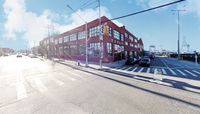 FOR LEASE
FOR LEASE
7,270 -11,610 SF | 160 Van Brunt | Office/Loft spaces for Lease
7,270 -11,610 SF | 160 Van Brunt | Office/Loft spaces for Lease
160 Van Brunt Street, Brooklyn, NY, 11231
- Office
- for Lease
- 4%
Unit 1+
Title: 160 Van Brunt Street, Suite 1C
Price: $25/SF per year
Size: 5,345 SF
Unit 2+
Title: 160 Van Brunt Street, Suite 1B
Price: $25/SF per year
Size: 4,364 SF
Unit 3+
Title: 160 Van Brunt Street, Suite 6
Price: $25/SF per year
Size: 7,269 SF
Unit 4+
Title: 160 Van Brunt Street, Suite 3
Price: $25/SF per year
Size: 11,610 SF
City: Brooklyn
State: NY
Min Size: 4364
Zoning: M2-1
Key Tag: Show
Listing Agent: Shlomi Bagdadi
Borough: Brooklyn
Neighborhood: Red Hook
Zip Code: 11231
Price: $25/SF per year
More Info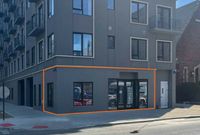 FOR LEASE
FOR LEASE
700 SF | 706 E 32nd Street | Vanilla Box Community Facility with Glass Frontage for Lease
700 SF | 706 E 32nd Street | Vanilla Box Community Facility with Glass Frontage for Lease
706 East 32nd Street, Brooklyn, NY, 11210
- Office
- for Lease
- 4.00%
Unit 1
Title: 706 E 32nd St
Price: $3,750/per month
Size: 700 SF
City: Brooklyn
State: NY
Min Size: 700
Zoning: R6A
Key Tag: Show
Listing Agent: Shlomi Bagdadi, Joey Sakkal
Vented: NO
Borough: Brooklyn
Neighborhood: Flatbush
Zip Code: 11210
Price: $3,750/monthly
More Info FOR LEASE
FOR LEASE
20,000 – 100,000 SF | 1400 East State Street | Industrial Space for Lease
20,000 – 100,000 SF | 1400 East State Street | Industrial Space for Lease
1400 East State Street, Hamilton, NJ, 08609
- Industrial
- for Lease
- 4.25%
Unit 1+
Title: Smallest division
Price: $7.75/SF per year
Size: 20,000 SF
Unit 2+
Title: Total Space
Price: $7.75/SF per year
Size: 100,000 SF
City: Hamilton
State: NJ
Min Size: 20000
Zoning: I
Key Tag: Show
Listing Agent: Shlomi Bagdadi, Jack Sardar
Vented: NO
Borough: New Jersey
Neighborhood: Trenton
Zip Code: 08609
Price: $7.75/SF per year
More Info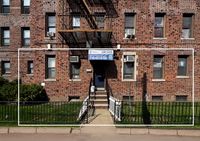 FOR LEASE
FOR LEASE
1,200 SF | 3680 Bedford Avenue | Turn-Key Medical Office for Lease
1,200 SF | 3680 Bedford Avenue | Turn-Key Medical Office for Lease
3680 Bedford Avenue, Brooklyn, NY, 11229
- Office
- for Lease
- 3 months
Unit 1
Title: 3680 Bedford Ave
Price: $4,000/per month
Size: 1,200 SF
City: Brooklyn
State: NY
Min Size: 1200
Zoning: Group 4 & UG 3
Key Tag: Show
Listing Agent: Shlomi Bagdadi, Samuel Shouela
Vented: NO
Borough: Brooklyn
Neighborhood: Midwood
Zip Code: 11229
Price: $4,000/monthly
More Info FOR LEASE
FOR LEASE
1,850 SF | 1584 Fulton Street | Brand-New Ventable Retail/Office Space for Lease
1,850 SF | 1584 Fulton Street | Brand-New Ventable Retail/Office Space for Lease
1584 Fulton Street, Brooklyn, NY, 11213
- Retail
- for Lease
- 3 months flat - 50% at signing // 50% after 1st months non prepaid rent
Unit 1
Title: 1584 Fulton St
Price: $8,250/per month
Size: 1,850 SF
City: Brooklyn
State: NY
Min Size: 1850
Zoning: R7D, C2-4
Key Tag: Show
Listing Agent: Shlomi Bagdadi, Fredy Halabi, Joey Sakkal
Vented: CAN BE
Borough: Brooklyn
Neighborhood: Bed-Stuy
Zip Code: 11213
Price: $8,250/monthly
More Info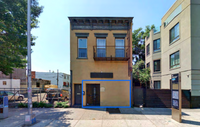 FOR LEASE
FOR LEASE
3,200 SF | 26 Malcolm X Boulavard | Prime Retail Space for Lease
3,200 SF | 26 Malcolm X Boulavard | Prime Retail Space for Lease
26 Malcolm X Blvd, Brooklyn, NY, 11221
- Retail
- for Lease
- 2 months (Please collect one month)
Unit 1
Title: 26 Malcolm X Blvd
Price: $12,500/per month
Size: 3,200 SF
City: Brooklyn
State: NY
Min Size: 3200
Zoning: R6A
Key Tag: Show
Listing Agent: Shlomi Bagdadi, Samuel Shouela
Vented: NO
Borough: Brooklyn
Neighborhood: Bed-Stuy
Zip Code: 11221
Price: $12,500/monthly
More Info FOR LEASE
FOR LEASE
2,500 SF | 4606 3rd Avenue | Vanilla Box Retail Space for Lease
2,500 SF | 4606 3rd Avenue | Vanilla Box Retail Space for Lease
4606 3rd Avenue, Brooklyn, NY, 11220
- Retail
- for Lease
Unit 1
Title: 4606 3rd Ave
Price: $30/SF per year
Size: 2,500 SF
City: Brooklyn
State: NY
Min Size: 2500
Zoning: M1-2D
Key Tag: Show
Listing Agent: Shlomi Bagdadi, Maurice Amar
Vented: NO
Borough: Brooklyn
Neighborhood: Sunset Park
Zip Code: 11220
Price: $30/SF per year
More Info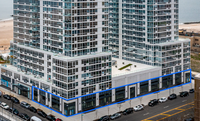 FOR LEASE
FOR LEASE
3,710 – 20,000 SF | 3522 Surf Avenue | Retail Space On Waterfront For Lease
3,710 – 20,000 SF | 3522 Surf Avenue | Retail Space On Waterfront For Lease
3522 Surf Avenue, Brooklyn, NY, 11224
- Retail
- for Lease
- n/a
Unit 1+
Title: Space A
Price: $35/SF per year
Size: 4,060 SF
Unit 2+
Title: Space B
Price: $35/SF per year
Size: 6,285 SF
Unit 3+
Title: Space C
Price: $35/SF per year
Size: 5,875 SF
Unit 4+
Title: Space D
Price: $35/SF per year
Size: 3,710 SF
Unit 5+
Title: Total Space
Price: $35/SF per year
Size: 20,000 SF
City: Brooklyn
State: NY
Min Size: 3710
Zoning: R7-3/C2-4
Key Tag: Show
Listing Agent: Shlomi Bagdadi, Maurice Amar, Joy Fescine
Vented: NO
Borough: Brooklyn
Neighborhood: Coney Island
Zip Code: 11224
Price: $35/SF per year
More Info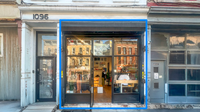 FOR LEASE
FOR LEASE
450 SF | 1096 Dekalb Ave | Newly Renovated Boutique Retail Space For Lease
450 SF | 1096 Dekalb Ave | Newly Renovated Boutique Retail Space For Lease
1096 Dekalb Ave, Brooklyn, NY, 11221
- Retail
- for Lease
- 3 months rent or 5%
Unit 1
Title: 1096 Dekalb Ave
Price: $2,800/per month
Size: 450 SF
City: Brooklyn
State: NY
Min Size: 450
Zoning: R6A
Key Tag: Show
Listing Agent: Shlomi Bagdadi, Joey Bouzaglou
Vented: NO
Borough: Brooklyn
Neighborhood: Bed-Stuy
Zip Code: 11221
Price: $2,800/monthly
More Info FOR LEASE
FOR LEASE
3,400 – 7,600 SF | 211 Schermerhorn Street | New Development Retail Space With Glass Frontage For Lease
3,400 – 7,600 SF | 211 Schermerhorn Street | New Development Retail Space With Glass Frontage For Lease
211 Schermerhorn St, Brooklyn, NY, 11201
- Retail
- for Lease
- 4.50%
Unit 1+
Title: Ground Floor
Price: $75/SF per year
Size: 4,200 SF
Unit 2+
Title: Space A
Price: $75/SF per year
Size: 2,600 SF
Unit 3+
Title: Space B
Price: $75/SF per year
Size: 3,000 SF
Unit 4+
Title: Lower Level
Price: $40/SF per year
Size: 3,425 SF
City: Brooklyn
State: NY
Min Size: 2600
Key Tag: Show
Listing Agent: Shlomi Bagdadi, Leo Beda
Vented: NO
Borough: Brooklyn
Neighborhood: Downtown Brooklyn
Zip Code: 11201
Price: $40-$75/SF per year
More Info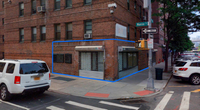 FOR LEASE
FOR LEASE
1,600 SF | 61 Catherine Street | Corner Retail Office Space For Lease
1,600 SF | 61 Catherine Street | Corner Retail Office Space For Lease
61 Catherine Street, New York, NY, 10002
- Retail
- for Lease
- sliding
Unit 1
Title: 61 Catherine St
Price: $45/SF per year
Size: 1,600 SF
City: New York
State: NY
Min Size: 1600
Zoning: R7-2, C1-5
Key Tag: Show
Listing Agent: Shlomi Bagdadi, Freddy Bagdadi, Avi Saadia
Vented: NO
Borough: Manhattan
Neighborhood: Two Bridges
Zip Code: 10002
Price: $45/SF per year
More Info FOR LEASE
FOR LEASE
1,000 – 4,300 SF | 224 3rd Avenue | Retail Space In Brand New Luxury Development For Lease
1,000 – 4,300 SF | 224 3rd Avenue | Retail Space In Brand New Luxury Development For Lease
224 3rd Ave, Brooklyn, NY, 11217
- Retail
- for Lease
- 5% with a 2.5% additional CM override for corporate signature tenant (potential total of 7.5%)
Unit 1+
Title: 224 3rd Avenue
Price: $90/SF per year
Size: 6,300 SF
Unit 2+
Title: Space A
Price: $90/SF per year
Size: 3,300 SF
Unit 3+
Title: Space B
Price: $125/SF per year
Size: 1,000 SF
City: Brooklyn
State: NY
Min Size: 1000
Zoning: M1-4/R7X, G
Key Tag: Show
Listing Agent: Shlomi Bagdadi, Richard Babeck
Vented: NO
Borough: Brooklyn
Neighborhood: Gowanus
Zip Code: 11217
Price: $90-$125/SF per year
More Info FOR LEASE
FOR LEASE
2,000 SF | 9 East 170th Street | Retail Space With Glass Frontage For Lease
2,000 SF | 9 East 170th Street | Retail Space With Glass Frontage For Lease
9 East 170th Street, Bronx, NY, 10452
- Retail
- for Lease
- 3.00%
Unit 1
Title: 9 East 170th Street
Price: $130/SF per year
Size: 2,000 SF
City: Bronx
State: NY
Min Size: 2000
Zoning: R8A, C2-4
Key Tag: Show
Listing Agent: Shlomi Bagdadi, Freddy Bagdadi
Vented: NO
Borough: The Bronx
Neighborhood: Mt. Eden
Zip Code: 10452
Price: $130/SF per year
More Info FOR LEASE
FOR LEASE
200 – 3,000 SF | 295 Front Street | Beautifully Built Out Offices For Lease
200 – 3,000 SF | 295 Front Street | Beautifully Built Out Offices For Lease
295 Front Street, Brooklyn, NY, 11201
- Office
- for Lease
- Sliding Scale
Unit 1+
Title: Smallest Space Available
Price: $30/SF per year
Size: 200 SF
Unit 2+
Title: Total Space Available
Price: $30/SF per year
Size: 3,000 SF
City: Brooklyn
State: NY
Min Size: 200
Zoning: M1-2
Key Tag: Show
Listing Agent: Shlomi Bagdadi
Vented: NO
Borough: Brooklyn
Neighborhood: Vinegar Hill
Zip Code: 11201
Price: $30/SF per year
More Info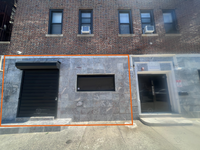 FOR LEASE
FOR LEASE
1,500 SF | 315 93rd Street | Newly Renovated Retail/Office Space In Prime Bay Ridge For Lease
1,500 SF | 315 93rd Street | Newly Renovated Retail/Office Space In Prime Bay Ridge For Lease
315 93rd St, Brooklyn, NY, 11209
- Retail
- for Lease
- 4.20%
Unit 1
Title: 315 93rd St
Price: $4,750/per month
Size: 1,500 SF
City: Brooklyn
State: NY
Min Size: 1500
Zoning: R4-1
Key Tag: Show
Listing Agent: Shlomi Bagdadi, Michael Elkharrat
Vented: YES
Borough: Brooklyn
Neighborhood: Bay Ridge
Zip Code: 11209
Price: $4,750/monthly
More Info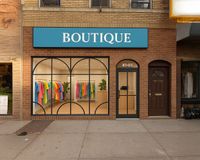 FOR LEASE
FOR LEASE
1,100 SF | 87-05 Jamaica Avenue | Built-Out Office For Lease
1,100 SF | 87-05 Jamaica Avenue | Built-Out Office For Lease
87-05 Jamaica Avenue, Woodhaven , NY, 11421
- Office
- for Lease
- 5.0%
Unit 1
Title: 87-05 Jamaica Ave
Price: $50/SF per year
Size: 1,100 SF
City: Woodhaven
State: NY
Min Size: 1100
Zoning: R6A, C1-4
Key Tag: Show
Listing Agent: Shlomi Bagdadi, Richard Babeck
Vented: NO
Borough: Queens
Neighborhood: Woodhaven
Zip Code: 11421
Price: $50/SF per year
More Info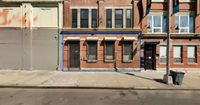 FOR LEASE
FOR LEASE
900 SF | 1191 Atlantic Avenue | Ground Floor Vanilla Box Retail Space for Lease
900 SF | 1191 Atlantic Avenue | Ground Floor Vanilla Box Retail Space for Lease
1191 Atlantic Ave, Brooklyn, NY, 11216
- Office
- for Lease
- 3 months flat
Unit 1+
Title: 2nd floor office
Price: $4,500/per month
Size: 1,600 SF
Unit 2+
Title: Ground floor
Price: $3,750/per month
Size: 900 SF
City: Brooklyn
State: NY
Min Size: 900
Zoning: M1-1
Key Tag: Show
Listing Agent: Shlomi Bagdadi, Joey Sakkal
Vented: NO
Borough: Brooklyn
Neighborhood: Bed-Stuy
Zip Code: 11216
Price: $3,750-$4,500/monthly
More Info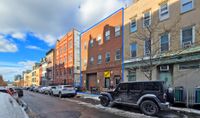 FOR LEASE
FOR LEASE
3,900 SF | 281 20th Street | Beautiful Built-Out Office For Lease
3,900 SF | 281 20th Street | Beautiful Built-Out Office For Lease
281 20th St, Brooklyn, NY, 11215
- Office
- for Lease
- 5% 6% on Cobroke
Unit 1+
Title: Ground Floor - 3,196 SF
Price: $55/SF per year
Size: 3,200 SF
Unit 2+
Title: Mezzanine - 469 SF
Price: $55/SF per year
Size: 470 SF
Unit 3+
Title: Bulkhead - 237 SF
Price: $55/SF per year
Size: 240 SF
Unit 4+
Title: 281 20th Street
Price: $16,000/per month
Size: 3,900 SF
City: Brooklyn
State: NY
Min Size: 240
Zoning: R6B
Key Tag: Show
Listing Agent: Shlomi Bagdadi, Michael Elkharrat
Vented: NO
Borough: Brooklyn
Neighborhood: South Slope
Zip Code: 11215
Price: $16,000/monthly
More Info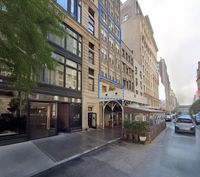 FOR LEASE
FOR LEASE
2,400 – 2,500 SF | 27 E 21 Street | Historic Retail Office Spaces Available in Prime Gramercy
2,400 – 2,500 SF | 27 E 21 Street | Historic Retail Office Spaces Available in Prime Gramercy
27 East 21st Street, New York, NY, 10010
- Retail
- for Lease
- 3 months for 5 years and less, 4.5 months for 10 year lease
Unit 1+
Title: 2nd Floor
Price: $10,000/per month
Size: 2,500 SF
Unit 2+
Title: 6th Floor
Price: $9,000/per month
Size: 2,400 SF
City: New York
State: NY
Min Size: 2500
Zoning: M1-5M
Key Tag: Show
Listing Agent: Shlomi Bagdadi, Joy Fescine
Vented: NO
Borough: Manhattan
Neighborhood: Gramercy
Zip Code: 10010
Price: Call For Price
More Info FOR LEASE
FOR LEASE
16,500 SF | 413 20th Street | Big Box Space With 24′ Ceilings For Lease
16,500 SF | 413 20th Street | Big Box Space With 24′ Ceilings For Lease
413 20th St, Brooklyn, NY, 11215
- Retail
- for Lease
- 4.20%
Unit 1
Title: 413 20th St
Price: $35/SF per year
Size: 16,500 SF
City: Brooklyn
State: NY
Min Size: 16500
Zoning: M1-1
Key Tag: Show
Listing Agent: Shlomi Bagdadi, Fredy Halabi, Michael Elkharrat
Vented: NO
Borough: Brooklyn
Neighborhood: South Slope
Zip Code: 11215
Price: $35/SF per year
More Info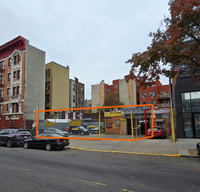 FOR LEASE
FOR LEASE
4,400 SF | 348 Metropolitan Ave | Retail/Industrial Space In Prime Williamsburg For Lease
4,400 SF | 348 Metropolitan Ave | Retail/Industrial Space In Prime Williamsburg For Lease
348 Metropolitan Ave, Brooklyn, NY, 11211
- Retail
- for Lease
- 4%
Unit 1
Title: 348 Metropolitan Avenue
Price: $26,000/per month
Size: 4,400 SF
City: Brooklyn
State: NY
Min Size: 4400
Zoning: M12/R6A
Key Tag: Show
Listing Agent: Shlomi Bagdadi, Samuel Shouela
Vented: NO
Borough: Brooklyn
Neighborhood: Williamsburg
Zip Code: 11211
Price: $26,000/monthly
More Info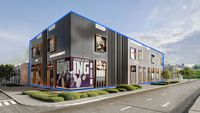 FOR LEASE
FOR LEASE
5,000 – 22,000 SF | 21 Wythe Avenue | New Flagship Retail Opportunity For Lease
5,000 – 22,000 SF | 21 Wythe Avenue | New Flagship Retail Opportunity For Lease
21 Wythe Avenue, Brooklyn, NY, 11249
- Retail
- for Lease
- 5.0%
Unit 1+
Title: Ground Floor - Smallest Division
Price: $125/SF per year
Size: 5,000 SF
Unit 2+
Title: 2nd Floor
Price: $75/SF per year
Size: 22,000 SF
Unit 3+
Title: 3rd Floor
Price: $55/SF per month
Size: 15,000 SF
Unit 4+
Title: Total Space
Price: $125/SF per month
Size: 69,000 SF
Unit 5+
Title: Roof
Price: $40/SF per month
Size: 10,000 SF
City: Brooklyn
State: NY
Min Size: 5000
Zoning: M1-2
Key Tag: Show
Listing Agent: Shlomi Bagdadi, Richard Babeck
Vented: NO
Borough: Brooklyn
Neighborhood: Williamsburg
Zip Code: 11249
Price: $40-$125/SF per month
More Info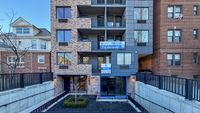 FOR LEASE
FOR LEASE
2,300 SF | 265 Ocean Parkway | Community Facility/Office With Glass Frontage For Lease
2,300 SF | 265 Ocean Parkway | Community Facility/Office With Glass Frontage For Lease
265 Ocean Parkway, Brooklyn , NY, 11218
- Office
- for Lease
- 5%
Unit 1
Title: 265 Ocean Parkway
Price: $35/SF per year
Size: 2,300 SF
City: Brooklyn
State: NY
Min Size: 2300
Zoning: R7A
Key Tag: Show
Listing Agent: Shlomi Bagdadi, Joey Sakkal
Vented: NO
Borough: Brooklyn
Neighborhood: Kensington
Zip Code: 11218
Price: $35/SF per year
More Info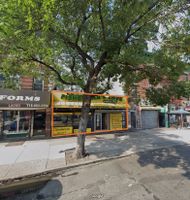 FOR SALE
FOR SALE
700 SF | 4917 Church Avenue | Turn Key Restaurant For Sale
700 SF | 4917 Church Avenue | Turn Key Restaurant For Sale
4917 Church Avenue, Brooklyn, NY, 11203
- Retail
- for Sale
- 15% of key money
City: Brooklyn
State: NY
Min Size: 4400
Zoning: R5
Key Tag: Show
Listing Agent: Shlomi Bagdadi, Samuel Shouela
Vented: YES
Borough: Brooklyn
Neighborhood: Little Caribbean
Zip Code: 11203
Sales Price : $350,000
More Info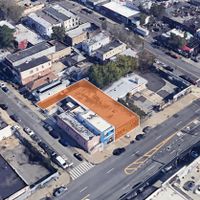 FOR SALE
FOR SALE
4,950 SF Warehouse + 2,000 SF Rear Lot For Sale
4,950 SF Warehouse + 2,000 SF Rear Lot For Sale
951 - 955 Remsen Ave, Brooklyn, NY, 11236
- Industrial
- for Sale
- 4% co broke and 3% if tsc sells it
City: Brooklyn
State: NY
Min Size: 4950
Zoning: M1-1
Key Tag: Show
Listing Agent: Shlomi Bagdadi, Jack Sardar
Vented: NO
Borough: Brooklyn
Neighborhood: East Flatbush
Zip Code: 11236
Sales Price : $2,500,000
More Info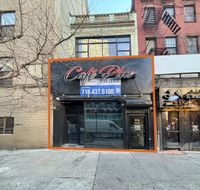 FOR LEASE
FOR LEASE
1,500 SF | 25 Bond Street | Built Out Restaurant For Lease
1,500 SF | 25 Bond Street | Built Out Restaurant For Lease
25 Bond Street, Brooklyn, NY, 11201
- Retail
- for Lease
- 3.80%
Unit 1
Title: 25 Bond St
Price: $16,000/per month
Size: 1,500 SF
City: Brooklyn
State: NY
Min Size: 1500
Zoning: C6-4
Key Tag: Show
Listing Agent: Shlomi Bagdadi, Leo Beda
Vented: YES
Borough: Brooklyn
Neighborhood: Downtown Brooklyn
Zip Code: 11201
Price: $16,000/monthly
More Info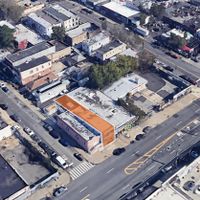 FOR SALE
FOR SALE
2,240 SF | 949 Remsen Avenue | Warehouse For Sale – Delivered Vacant
2,240 SF | 949 Remsen Avenue | Warehouse For Sale – Delivered Vacant
949 Remsen Ave , Brooklyn, NY, 11236
- Industrial
- for Sale
- 4% co broke and 3% if tsc sells it
City: Brooklyn
State: NY
Min Size: 2240
Zoning: M1-1
Key Tag: Show
Listing Agent: Shlomi Bagdadi, Jack Sardar
Vented: NO
Borough: Brooklyn
Neighborhood: East Flatbush
Zip Code: 11236
Sales Price : $1,500,000
More Info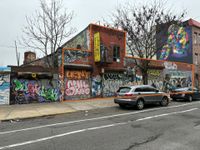 FOR LEASE
FOR LEASE
10,000 – 20,000 SF | 199 Starr Street | Block Through Retail/Industrial Building With High Ceilings For Lease
10,000 – 20,000 SF | 199 Starr Street | Block Through Retail/Industrial Building With High Ceilings For Lease
199 Starr Street, Brooklyn , NY, 11237
- Retail
- for Lease
- 2 months , collect a month
Unit 1+
Title: Total Space
Price: $24/SF per year
Size: 20,000 SF
Unit 2+
Title: Option 1
Price: $24/SF per year
Size: 10,000 SF
Unit 3+
Title: Options 2
Price: $24/SF per year
Size: 10,000 SF
City: Brooklyn
State: NY
Min Size: 10000
Zoning: M1-1
Key Tag: Show
Listing Agent: Shlomi Bagdadi, Fredy Halabi
Vented: NO
Borough: Brooklyn
Neighborhood: Bushwick
Zip Code: 11237
Price: $24/SF per year
More Info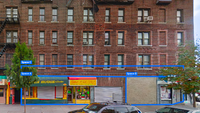 FOR LEASE
FOR LEASE
1,500 – 3,000 SF | 902 Clarkson Avenue | Retail Spaces With Glass Frontage & Venting For Lease
1,500 – 3,000 SF | 902 Clarkson Avenue | Retail Spaces With Glass Frontage & Venting For Lease
902 Clarkson Avenue, Brooklyn, NY, 11203
- Retail
- for Lease
- 4%
Unit 1+
Title: Space A
Price: $4,500/per month
Size: 1,500 SF
Unit 2+
Title: Space B
Price: $5,000/per month
Size: 1,500 SF
Unit 3+
Title: Space C
Price: $9,500/per month
Size: 3,000 SF
City: Brooklyn
State: NY
Min Size: 1500
Zoning: R6
Key Tag: Show
Listing Agent: Shlomi Bagdadi, Freddy Bagdadi, Avi Saadia
Vented: YES
Borough: Brooklyn
Neighborhood: East Flatbush
Zip Code: 11203
Price: $4,500-$9,500/monthly
More Info FOR LEASE
FOR LEASE
1,900 SF | 1601 Surf Avenue | Newly Developed Retail Space For Lease
1,900 SF | 1601 Surf Avenue | Newly Developed Retail Space For Lease
1601 Surf Avenue, Brooklyn , NY, 11224
- Retail
- for Lease
Unit 1+
Title: Space A
Price: $7,125/per month
Size: 1,900 SF
Unit 2+
Title: Space B
Price: $11,250/per month
Size: 3,000 SF
Unit 3+
Title: Space C
Price: $18,750/per month
Size: 5,000 SF
City: Brooklyn
State: NY
Min Size: 1900
Key Tag: Show
Listing Agent: Shlomi Bagdadi, Maurice Amar, Joy Fescine
Vented: NO
Borough: Brooklyn
Neighborhood: Coney Island
Zip Code: 11224
Price: $7,125-$18,750/monthly
More Info FOR LEASE
FOR LEASE
1,500 – 3,000 SF | 459 5th Avenue | Corner White Boxed Retail Space For Lease
1,500 – 3,000 SF | 459 5th Avenue | Corner White Boxed Retail Space For Lease
459 5th Avenue, Brooklyn , NY, 11215
- Retail
- for Lease
- 4%
Unit 1+
Title: Total Space
Price: $10,500/per month
Size: 3,000 SF
Unit 2+
Title: Option A
Price: $6,000/per month
Size: 1,500 SF
Unit 3+
Title: Option B
Price: $6,000/per month
Size: 1,500 SF
City: Brooklyn
State: NY
Min Size: 1500
Zoning: C4-3A
Key Tag: Show
Listing Agent: Shlomi Bagdadi, Michael Elkharrat
Vented: NO
Borough: Brooklyn
Neighborhood: Park Slope
Zip Code: 11215
Price: $6,000-$10,500/monthly
More Info FOR LEASE
FOR LEASE
10,000 SF | 2886 Third Avenue | Second Floor Office Space With Wrap Around Frontage For Lease
10,000 SF | 2886 Third Avenue | Second Floor Office Space With Wrap Around Frontage For Lease
2886 Third Avenue, Bronx , NY, 10455
- Office
- for Lease
- 4%
Unit 1
Title: 2886 Third Avenue
Price: $29/SF per year
Size: 10,000 SF
City: Bronx
State: NY
Min Size: 10000
Zoning: C4-4
Key Tag: Show
Listing Agent: Shlomi Bagdadi
Vented: NO
Borough: The Bronx
Neighborhood: Woodstock
Zip Code: 10455
Price: $29/SF per year
More Info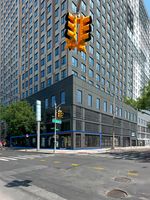 FOR LEASE
FOR LEASE
1,000 – 5,000 SF | 94-15 Sutphin Boulevard | Two Corner Flagship Retail Opportunities On Sutphin Blvd For Lease
1,000 – 5,000 SF | 94-15 Sutphin Boulevard | Two Corner Flagship Retail Opportunities On Sutphin Blvd For Lease
94-15 Sutphin Boulevard, Queens, NY, 11435
- Retail
- for Lease
- 4%
Unit 1+
Title: Space 1
Price: $100/SF per year
Size: 5,000 SF
Unit 2+
Title: Space 2
Price: $75/SF per year
Size: 4,000 SF
Unit 3+
Title: Total Space
Price: $72/SF per year
Size: 9,000 SF
City: Queens
State: NY
Min Size: 4000
Key Tag: Show
Listing Agent: Shlomi Bagdadi, Richard Babeck
Vented: NO
Borough: Queens
Neighborhood: Jamaica
Zip Code: 11435
Price: $72-$100/SF per year
More Info FOR LEASE
FOR LEASE
615 SF | 927 Atlantic Avenue | Retail Space with Stunning Glass Frontage for Lease
615 SF | 927 Atlantic Avenue | Retail Space with Stunning Glass Frontage for Lease
927 Atlantic Ave, Brooklyn, NY, 11238
- Retail
- for Lease
- 3 Months
Unit 1
Title: 927 Atlantic Ave
Price: $3,850/per month
Size: 615 SF
City: Brooklyn
State: NY
Min Size: 615
Zoning: R7A
Key Tag: Show
Listing Agent: Shlomi Bagdadi, Avi Saadia
Vented: NO
Borough: Brooklyn
Neighborhood: Clinton Hill
Zip Code: 11238
Price: $3,850/monthly
More Info FOR LEASE
FOR LEASE
1,250 SF | 71 Saint Nicholas Avenue | Move In Ready Community Facility Space For Lease
1,250 SF | 71 Saint Nicholas Avenue | Move In Ready Community Facility Space For Lease
71 Saint Nicholas Avenue, New York, NY, 10026
- Special Purpose
- for Lease
- 4%
Unit 1
Title: 71 Saint Nicholas Avenue
Price: $4,500/per month
Size: 1,250 SF
City: New York
State: NY
Min Size: 1250
Zoning: R7-2
Key Tag: Show
Listing Agent: Shlomi Bagdadi, Freddy Bagdadi
Vented: NO
Borough: Manhattan
Neighborhood: Harlem
Zip Code: 10026
Price: $4,500/monthly
More Info FOR LEASE
FOR LEASE
1,000 SF | 81 Catherine Street | Newly White Boxed Space for Lease
1,000 SF | 81 Catherine Street | Newly White Boxed Space for Lease
81 Catherine Street, New York, NY, 10002
- Retail
- for Lease
- 4%
Unit 1
Title: 81 Catherine Street
Price: $40/SF per year
Size: 1,000 SF
City: New York
State: NY
Min Size: 1000
Zoning: R7-2, C1-5
Key Tag: Show
Listing Agent: Shlomi Bagdadi, Freddy Bagdadi, Avi Saadia
Vented: YES
Borough: Manhattan
Neighborhood: Two Bridges
Zip Code: 10002
Price: $40/SF per year
More Info FOR LEASE
FOR LEASE
1,200 SF | 34A Monroe Street | Former Dry Cleaners For Lease
1,200 SF | 34A Monroe Street | Former Dry Cleaners For Lease
34A Monroe Street, New York, NY, 10002
- Retail
- for Lease
- 4%
Unit 1
Title: 34A Monroe Street
Price: $35/SF per year
Size: 1,200 SF
City: New York
State: NY
Min Size: 1200
Zoning: R7-2, C1-5
Key Tag: Show
Listing Agent: Shlomi Bagdadi, Freddy Bagdadi, Avi Saadia
Vented: NO
Borough: Manhattan
Neighborhood: Two Bridges
Zip Code: 10002
Price: $35/SF per year
More Info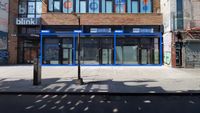 FOR LEASE
FOR LEASE
1,600 – 5,700 SF | 888 Broadway | Vanilla Box Retail Spaces With Glass Frontage and 25 FT Ceilings For Lease
1,600 – 5,700 SF | 888 Broadway | Vanilla Box Retail Spaces With Glass Frontage and 25 FT Ceilings For Lease
888 Broadway, Brooklyn, NY, 11206
- Retail
- for Lease
- 4%
Unit 1+
Title: Space A
Price: $75/SF per year
Size: 1,600 SF
Unit 2+
Title: Space C
Price: $75/SF per year
Size: 2,000 SF
Unit 3+
Title: Total
Price: $75/SF per year
Size: 5,700 SF
City: Brooklyn
State: NY
Min Size: 1600
Zoning: C4-4L
Key Tag: Show
Listing Agent: Shlomi Bagdadi, Michael Elkharrat
Vented: NO
Borough: Brooklyn
Neighborhood: Bed-Stuy
Zip Code: 11206
Price: $75/SF per year
More Info FOR SALE
FOR SALE
Vacant 8,000 SF Ground Floor + 8,000 SF Lower Level | 1404 Rockaway Parkway | Retail Property With 75 FT of Frontage For Sale
Vacant 8,000 SF Ground Floor + 8,000 SF Lower Level | 1404 Rockaway Parkway | Retail Property With 75 FT of Frontage For Sale
1404 Rockaway Parkway, Brooklyn, NY, 11236
- Retail
- for Sale
- 3%
City: Brooklyn
State: NY
Min Size: 16000
Zoning: R5-D/C1-3
Key Tag: Show
Listing Agent: Shlomi Bagdadi, Jack Sardar
Vented: NO
Borough: Brooklyn
Neighborhood: Canarsie
Zip Code: 11236
Sales Price : $5,450,000
More Info FOR SALE
FOR SALE
3,500 SF | 455 Utica Ave | Two Story Building with 3 Commercial Spaces for Sale
3,500 SF | 455 Utica Ave | Two Story Building with 3 Commercial Spaces for Sale
455 Utica Ave, Brooklyn, NY, 11203
- Retail
- for Sale
City: Brooklyn
State: NY
Min Size: 3500
Zoning: C8-2
Listing Agent: Shlomi Bagdadi, Jack Sardar
Vented: NO
Borough: Brooklyn
Neighborhood: East Flatbush
Zip Code: 11203
Sales Price : $1,300,000
More Info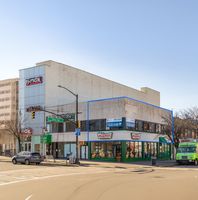 FOR LEASE
FOR LEASE
Up to 2,500 SF | 29-28 Ditmars Boulevard | Second Floor Retail Spaces W/ Significant Branding Opportunities & Signage Visibility for Lease
Up to 2,500 SF | 29-28 Ditmars Boulevard | Second Floor Retail Spaces W/ Significant Branding Opportunities & Signage Visibility for Lease
29-28 Ditmars Boulevard, Astoria-Ditmars, NY, 11105
- Retail
- for Lease
- 4%
Unit 1+
Title: Space A
Price: $50/SF per year
Size: 1,400 SF
Unit 2+
Title: Space B
Price: $50/SF per year
Size: 1,300 SF
Unit 3+
Title: Space C
Price: $35/SF per year
Size: 170 SF
Unit 4+
Title: Space D
Price: $35/SF per year
Size: 450 SF
Unit 5+
Title: Space E
Price: $35/SF per year
Size: 380 SF
Unit 6+
Title: Combined Spaces C, D, E
Price: $35/SF per year
Size: 1,000 SF
City: Astoria-Ditmars
State: NY
Min Size: 170
Zoning: C4-2A
Key Tag: Show
Listing Agent: Shlomi Bagdadi, Richard Babeck
Vented: NO
Borough: Queens
Neighborhood: Astoria
Zip Code: 11105
Price: $35-$50/SF per year
More Info FOR LEASE
FOR LEASE
1,200 SF | 448 Wilson Avenue | Newly Renovated Corner Duplex W/ Split Units for Lease
1,200 SF | 448 Wilson Avenue | Newly Renovated Corner Duplex W/ Split Units for Lease
448 Wilson Avenue, Brooklyn, NY, 11211
- Retail
- for Lease
- 4%
Unit 1
Title: 448 Wilson Avenue
Price: $3,599/per month
Size: 1,200 SF
City: Brooklyn
State: NY
Min Size: 1200
Zoning: R6, C2-3
Key Tag: Show
Listing Agent: Shlomi Bagdadi, Kirill Galperin
Vented: NO
Borough: Brooklyn
Neighborhood: Bushwick
Zip Code: 11211
Price: $3,599/monthly
More Info FOR LEASE
FOR LEASE
12,100 SF | 2128 Ocean Ave | Large Community Facility W/ Private Entrances & Landlord Buildout for Lease
12,100 SF | 2128 Ocean Ave | Large Community Facility W/ Private Entrances & Landlord Buildout for Lease
2128 Ocean Ave, Brooklyn, NY, 11229
- Special Purpose
- for Lease
- 1.5 Months
Unit 1
Title: 2128 Ocean Ave
Price: $30,125/per month
Size: 12,100 SF
City: Brooklyn
State: NY
Min Size: 12100
Zoning: R7A
Key Tag: Show
Listing Agent: Shlomi Bagdadi, Fred Betesh, Jack Sardar
Vented: NO
Borough: Brooklyn
Neighborhood: Midwood
Zip Code: 11229
Price: $30,125/monthly
More Info FOR LEASE
FOR LEASE
1,900 – 8,400 SF | 475 Bay Street | Newly Developed Retail Space W/ 120 Ft Glass Frontage, High Ceilings, & Loading Dock for Lease
1,900 – 8,400 SF | 475 Bay Street | Newly Developed Retail Space W/ 120 Ft Glass Frontage, High Ceilings, & Loading Dock for Lease
475 Bay Street, Staten Island, NY, 10304
- Retail
- for Lease
Unit 1+
Title: Space A
Price: $45/SF per year
Size: 1,900 SF
Unit 2+
Title: Space B
Price: $45/SF per year
Size: 3,300 SF
Unit 3+
Title: Space C
Price: $45/SF per year
Size: 3,200 SF
City: Staten Island
State: NY
Min Size: 1900
Zoning: R6
Key Tag: Show
Listing Agent: Shlomi Bagdadi, Kirill Galperin, Joy Fescine
Vented: NO
Borough: Staten Island
Neighborhood: Stapleton Heights
Zip Code: 10304
Price: $45/SF per year
More Info FOR LEASE
FOR LEASE
3,800 – 7,600 SF | 1027 Beach 20th St | Second & Third Floor Office Spaces for Lease
3,800 – 7,600 SF | 1027 Beach 20th St | Second & Third Floor Office Spaces for Lease
1027 Beach 20th St, Far Rockaway, NY, 11691
- Office
- for Lease
- 4%
Unit 1+
Title: Second Floor
Price: $30/SF per year
Size: 3,800 SF
Unit 2+
Title: Third Floor
Price: $30/SF per year
Size: 3,800 SF
Unit 3+
Title: Total Space
Price: $30/SF per year
Size: 7,600 SF
City: Far Rockaway
State: NY
Min Size: 3800
Zoning: R6/C2-4
Key Tag: Show
Listing Agent: Shlomi Bagdadi, Samuel Shouela
Vented: NO
Borough: Queens
Neighborhood: Far Rockaway
Zip Code: 11691
Price: $30/SF per year
More Info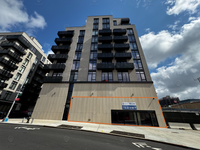 FOR LEASE
FOR LEASE
4,400 SF | 38-27 32nd Street | Vanilla Box Retail With 20 Ft of Frontage for Lease
4,400 SF | 38-27 32nd Street | Vanilla Box Retail With 20 Ft of Frontage for Lease
38-27 32nd Street , Queens , NY, 11106
- Retail
- for Lease
- 3%
Unit 1
Title: 38-27 32nd Street
Price: $60/SF per year
Size: 4,400 SF
City: Queens
State: NY
Min Size: 4400
Zoning: M1-3/R7X
Key Tag: Show
Listing Agent: Shlomi Bagdadi, Richard Babeck
Vented: NO
Borough: Queens
Neighborhood: Astoria
Zip Code: 11106
Price: $60/SF per year
More Info FOR SALE
FOR SALE
10,200 SF | 320 E 204th St | One Story Multi-Tenant Retail Building for Sale
10,200 SF | 320 E 204th St | One Story Multi-Tenant Retail Building for Sale
320 East 204th Street, Bronx, NY, 10467
- Retail
- for Sale
- "3% ON CO BROKE AND 2.5% IF TSC SELLS "
City: Bronx
State: NY
Min Size: 10200
Zoning: R5D, C1-4
Key Tag: Show
Listing Agent: Shlomi Bagdadi
Vented: NO
Neighborhood: Norwood
Zip Code: 10467
Sales Price : $6,300,000
More Info FOR LEASE
FOR LEASE
2,500 SF | 3708 Bergenline Ave | Retail Space For Lease
2,500 SF | 3708 Bergenline Ave | Retail Space For Lease
3708 Bergenline Ave, Union City, NJ, 07087
- Retail
- for Lease
- 4% and 5% on cobroke
Unit 1
Title: 3708 Bergenline Ave
Price: $8,500/per month
Size: 2,500 SF
City: Union City
State: NJ
Min Size: 2500
Zoning: C
Key Tag: Show
Listing Agent: Shlomi Bagdadi, Jack Sardar
Vented: NO
Borough: New Jersey
Neighborhood: Union City
Zip Code: 07087
Price: $8,500/monthly
More Info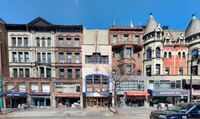 FOR LEASE
FOR LEASE
1,400 SF | 143 W 72nd St | 3rd Floor Office Space For Lease
1,400 SF | 143 W 72nd St | 3rd Floor Office Space For Lease
143 West 72nd Street, New York, NY, 10023
- Office
- for Lease
- 5.00%
Unit 1+
Title: 3rd Floor
Price: $7,250/per month
Size: 1,400 SF
Unit 2+
Title: 4th + 5th Floors
Price: $60/SF per month
Size: 3,300 SF
Unit 3+
Title: 3rd + 4th + 5th Floors
Price: $60/SF per month
Size: 5,300 SF
City: New York
State: NY
Min Size: 1400
Zoning: C4-6A
Key Tag: Show
Listing Agent: Shlomi Bagdadi, Freddy Bagdadi
Vented: NO
Borough: Manhattan
Neighborhood: Upper West Side
Zip Code: 10023
Price per SF: $60
More Info FOR LEASE
FOR LEASE
1,400 – 3,900 SF | 39 Graham Ave | Retail and Office Space for Lease
1,400 – 3,900 SF | 39 Graham Ave | Retail and Office Space for Lease
39 Graham Avenue, Brooklyn, NY, 11206
- Retail
- for Lease
Unit 1+
Title: 2nd Floor
Price: $45/SF per year
Size: 1,400 SF
Unit 2+
Title: Ground Floor
Price: $65/SF per year
Size: 2,500 SF
Unit 3+
Title: Ground + 2nd Floor
Price: $11,500/per month
Size: 3,900 SF
City: Brooklyn
State: NY
Min Size: 1400
Zoning: R7A
Key Tag: Show
Listing Agent: Shlomi Bagdadi, Samuel Shouela
Vented: NO
Borough: Brooklyn
Neighborhood: East Williamsburg
Zip Code: 11206
Price: $11,500/monthly
More Info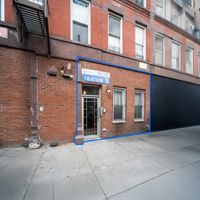 FOR LEASE
FOR LEASE
1,350 SF | 1088 Bedford Ave | Lower Level Turn-Key Office Space for Lease
1,350 SF | 1088 Bedford Ave | Lower Level Turn-Key Office Space for Lease
1088 Bedford Avenue, Brooklyn, NY, 11216
- Office
- for Lease
Unit 1
Title: 1088 Bedford Ave
Price: $4,650/per month
Size: 1,350 SF
City: Brooklyn
State: NY
Min Size: 1350
Zoning: R7A
Key Tag: Show
Listing Agent: Shlomi Bagdadi, Joey Sakkal
Vented: NO
Borough: Brooklyn
Neighborhood: Bed-Stuy
Zip Code: 11216
Price: $4,650/monthly
More Info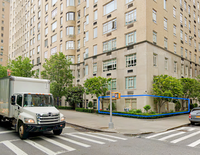 FOR SALE
FOR SALE
1,800 SF | 870 5th Avenue | Luxury Commercial Co-Op Space for Sale
1,800 SF | 870 5th Avenue | Luxury Commercial Co-Op Space for Sale
870 5th Avenue, New York, NY, 10065
- Multifamily
- for Sale
- 5.00%
City: New York
State: NY
Min Size: 235448
Zoning: R10, R8B, Pi, LH-1A
Key Tag: Show
Listing Agent: Shlomi Bagdadi, Jack Sardar
Vented: NO
Borough: Manhattan
Neighborhood: Upper East Side
Zip Code: 10065
Sales Price : $1,800,000
More Info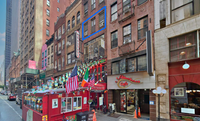 FOR LEASE
FOR LEASE
500 SF | 144 W 46th St | Upper Level Office/Studio Space For Lease
500 SF | 144 W 46th St | Upper Level Office/Studio Space For Lease
144 West 46th Street, New York, NY, 10036
- Office
- for Lease
- 3.20%
Unit 1+
Title: Suite 4R
Price: $2,400/per month
Size: 500 SF
Unit 2+
Title: Suite 4F
Price: $2,400/per month
Size: 500 SF
City: New York
State: NY
Min Size: 500
Zoning: C6-5.5
Key Tag: Show
Listing Agent: Shlomi Bagdadi, Freddy Bagdadi
Vented: NO
Borough: Manhattan
Neighborhood: Midtown
Zip Code: 10036
Price: $2,400/monthly
More Info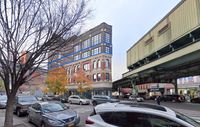 FOR LEASE
FOR LEASE
4,500 SF | 800 Broadway | Brand New Office Space for Lease
4,500 SF | 800 Broadway | Brand New Office Space for Lease
800 Broadway, Brooklyn, NY, 11206
- Office
- for Lease
Unit 1+
Title: 4th Floor
Price: $38/SF per year
Size: 4,500 SF
Unit 2+
Title: 5th Floor
Price: $42/SF per year
Size: 3,750 SF
Unit 3+
Title: 4th + 5th Floor
Price: $42/SF per year
Size: 8,250 SF
City: Brooklyn
State: NY
Min Size: 3750
Zoning: C4-4L
Key Tag: Show
Listing Agent: Shlomi Bagdadi, Freddy Bagdadi
Vented: NO
Borough: Brooklyn
Neighborhood: Bed-Stuy
Zip Code: 11206
Price: $38/sf
More Info FOR LEASE
FOR LEASE
2,000 SF | 170 South 1st Street | Retail Space for Lease – Next Door to Y7 Yoga
2,000 SF | 170 South 1st Street | Retail Space for Lease – Next Door to Y7 Yoga
170 South 1st Street, Brooklyn, NY, 11211
- Retail
- for Lease
Unit 1
Title: 170 S 1st St
Price: $9,500/per month
Size: 2,000 SF
City: Brooklyn
State: NY
Min Size: 2000
Zoning: R6
Listing Agent: Shlomi Bagdadi, Michael Elkharrat
Zip Code: 11211
Price: $9,500/monthly
More Info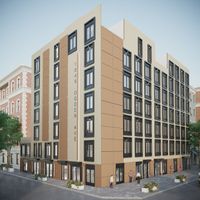 FOR LEASE
FOR LEASE
600 SF | 1049 Ogden Ave | Brand New Community Facility Space for Lease
600 SF | 1049 Ogden Ave | Brand New Community Facility Space for Lease
1049 Ogden Ave, Bronx, NY, 10452
- Special Purpose
- for Lease
Unit 1
Title: 1049 Ogden Ave
Price: $50/SF per year
Size: 600 SF
City: Bronx
State: NY
Min Size: 600
Zoning: R7-1
Listing Agent: Shlomi Bagdadi
Zip Code: 10452
Price: $50/SF per year
More Info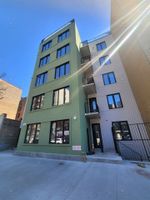 FOR LEASE
FOR LEASE
500 SF | 2556 Briggs Ave | Brand New Office Space for Lease
500 SF | 2556 Briggs Ave | Brand New Office Space for Lease
2556 Briggs Ave, Bronx, NY, 10459
- Office
- for Lease
Unit 1
Title: 2556 Briggs Ave
Price: $2,200/per month
Size: 500 SF
City: Bronx
State: NY
Min Size: 500
Zoning: R7B
Listing Agent: Shlomi Bagdadi
Zip Code: 10459
Price: $2,200/monthly
More Info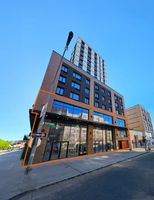 FOR LEASE
FOR LEASE
14,700 SF – 30,900 SF | 1010 Washington Ave | Brand New Space for Lease
14,700 SF – 30,900 SF | 1010 Washington Ave | Brand New Space for Lease
1010 Washington Avenue, Bronx, NY, 10456
- Office
- for Lease
Unit 1+
Title: Ground Floor
Price: $32/SF per year
Size: 14,700 SF
Unit 2+
Title: 2nd Floor
Price: $32/SF per year
Size: 16,200 SF
Unit 3+
Title: Ground + 2nd Floor
Price: $32/SF per year
Size: 30,900 SF
City: Bronx
State: NY
Min Size: 14700
Zoning: M1-1/R7-2
Key Tag: Show
Listing Agent: Shlomi Bagdadi
Vented: NO
Borough: The Bronx
Neighborhood: Morrisania
Zip Code: 10456
Price: $32/SF per year
More Info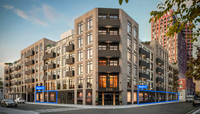 FOR LEASE
FOR LEASE
4,500 – 13,500 SF | 2-24 26th Avenue | Divisible Community Facility Space for Lease
4,500 – 13,500 SF | 2-24 26th Avenue | Divisible Community Facility Space for Lease
2-24 26th Avenue, Astoria, NY, 11102
- Special Purpose
- for Lease
- 3.00%
Unit 1+
Title: 2-24-26th Ave
Price: $35/SF per year
Size: 19,000 SF
Unit 2+
Title: Space B
Price: $35/SF per year
Size: 4,500 SF
Unit 3+
Title: Space C
Price: $35/SF per year
Size: 4,400 SF
Unit 4+
Title: Space A
Price: $35/SF per year
Size: 4,600 SF
Unit 5+
Title: Space A
Price: $35/SF per year
Size: 9,000 SF
City: Astoria
State: NY
Min Size: 4400
Zoning: R6
Key Tag: Show
Listing Agent: Shlomi Bagdadi, Richard Babeck
Borough: Queens
Neighborhood: Astoria
Zip Code: 11102
Price: $35/SF per year
More Info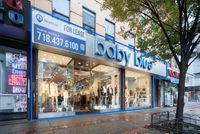 FOR LEASE
FOR LEASE
2,800 – 5,600 SF | 56-34 Myrtle Ave | Divisible Retail Space for Lease
2,800 – 5,600 SF | 56-34 Myrtle Ave | Divisible Retail Space for Lease
56-34 Myrtle Avenue, Queens, NY, 11385
- Retail
- for Lease
Unit 1+
Title: Entire Space
Price: $22,916/per month
Size: 5,600 SF
Unit 2+
Title: Division 1
Price: $55/SF per year
Size: 2,800 SF
Unit 3+
Title: Division 2
Price: $55/SF per year
Size: 2,800 SF
City: Queens
State: NY
Min Size: 2800
Zoning: C4-3A
Key Tag: Show
Listing Agent: Shlomi Bagdadi, Samuel Shouela
Vented: NO
Borough: Brooklyn
Neighborhood: Ridgewood
Zip Code: 11385
Price: $22,916/monthly
More Info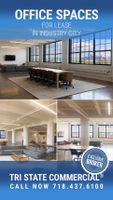 FOR LEASE
FOR LEASE
Industry City- Building 19
Industry City- Building 19
148 39th St, 3rd Floor, Brooklyn, NY, 11232
- Office
- for Lease
Unit 1
Title: Building 19 Unit B20
Size: 4,250 SF
City: Brooklyn
State: NY
Min Size: 4250
Zoning: M3-1
Listing Agent: Shlomi Bagdadi
Zip Code: 11232
Price: Call For Price
More Info FOR LEASE
FOR LEASE
2,500 SF | 189 Avenue C | Retail Space for Lease
2,500 SF | 189 Avenue C | Retail Space for Lease
189 Avenue C, New York, NY, 10009
- Retail
- for Lease
- 5%
Unit 1
Title: 189 Avenue C
Price: $11,500/per month
Size: 2,500 SF
City: New York
State: NY
Min Size: 2500
Zoning: R7A
Key Tag: Show
Listing Agent: Shlomi Bagdadi, Freddy Bagdadi
Vented: NO
Borough: Brooklyn
Neighborhood: East Village
Zip Code: 10009
Price: $11,500/monthly
More Info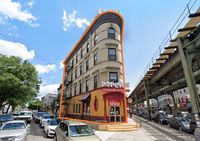 FOR SALE
FOR SALE
9,220 SF | Corner | 1465 Myrtle Ave | Commercial Building For Sale
9,220 SF | Corner | 1465 Myrtle Ave | Commercial Building For Sale
1465 Myrtle Ave, Brooklyn, NY, 11237
- Retail
- for Sale
- 4%
City: Brooklyn
State: NY
Min Size: 9220
Zoning: R6
Key Tag: Show
Listing Agent: Shlomi Bagdadi, Jack Sardar
Vented: NO
Borough: Brooklyn
Neighborhood: Bushwick
Zip Code: 11237
Sales Price : $4,250,000
More Info FOR SALE
FOR SALE
Commercial Two Story Building for Sale in Gravesend | Fully Occupied
Commercial Two Story Building for Sale in Gravesend | Fully Occupied
2845 86th Street, Brooklyn, NY, 11223
- Retail
- for Sale
City: Brooklyn
State: NY
Min Size: 2817
Zoning: R5, C1-2
Key Tag: Show
Listing Agent: Shlomi Bagdadi, Jack Sardar
Vented: NO
Borough: Brooklyn
Neighborhood: Gravesend
Zip Code: 11223
Sales Price : $1,200,000
More InfoShort history of Brooklyn's Commercial Real Estate Market
In 1732, the British Debt Recovery Act was passed and changed the United States Commercial Real Estate community forever. This act allowed British merchants to buy and own more than just their living property, and brought up the idea that land can be used instead of money. By the 19th century, Brooklyn’s population, commercial, industrial and residential development had reached its peak, with the majority of the territory being urbanized.
Years later, during the 20th century, real estate benefitted the States drastically. During this time, the first realty company was created (The National Association of Realtors). The National Association of Realtors was first founded as the National Association of Real Estate Exchanges on May 12, 1908 in Chicago. It originally had 120 members, 19 boards and one State Association, which of course all grew as time went on. The main goal this association hoped to accomplish was “to unite the real estate men of America for the purpose of effectively exerting a combined influence upon matters affecting real estate interests.”
Brooklyn was one of the greatest shopping locations, filled with both shops and residents. There were two attempts at urban renewal; one in the 50s/60s and one in the 80s/90s. The reason they were just attempts, and not successes was because of people like Jane Jacobs. At the time of the 50s/60s renewal, Jane was a 45 year old woman, working as editor of Architectural Forum. She believed that the renewal was not beneficial, rather it will destroy the city. On February 20, 1961, Mayor Robert Wagner announced that Jane’s area was going to be urbanized.
On February 25th, a Saturday night, 300 people met in St. Luke’s School at Hudson and Christopher Sts to put together the committee that would end up saving their city. Their aim was to completely get rid of the urbanizing project and keep their city intact. Within that week, children were creating and giving out posters and petitions, while their parents informed people in cafes and other shops. On March 21, Manhattan Borough President, Edward Dudley, examined homes and stated that this neighborhood was not filled with “slum dwellers”.
On August 17, the mayor stated that no urban renewal can be done to this city because it would ruin the “village traditions”. He later asked the committee to agree to the “blighted” area so that the renewal does not end up happening to them, but Jane did not want to accept these terms. Because of her rejection, on October 18, the Planning Commission said the urban renewal can be done in their city.
Jane then called a press conference to show the proof that there was a prearranged deal to urbanize their city. She had the resume of a man named Barry Benape that had written on it that he prepared sketches for the renewal. Barry’s papers were typed on the same typewriter that printed petitions that were pro the renewal, dated in October 1960; before the renewal plans were even publicized. Barry tried to play it off as a typo, and stated that it was actually created in 1961. Days before his reelection, the mayor stated he was very against urbanizing their city, so the Housing and Redevelopment Board got rid of it for good.
As time went on, Commercial Realty helped the economy grow and prosper. By the 21st century, the real estate world went digital, making it even easier for realtors and spaces to be found. Commercial realtors know that in order to be successful, they have to give it their all before they see success; and that no matter the time or place, when commercial realty is the topic, the community is the main focus. Later on, in 2004, there was a Downtown Brooklyn Rezoning.
The Downtown Brooklyn Rezoning changed the future of both Downtown Brooklyn and Brooklyn for the better. The idea of the Rezoning was that over 10 years, the area would reach 4.6 million square feet of office space, 850,000 square feet of retail, and 1,000 units of houses. In the end, the Rezoning only ended up using 1.3 million square feet for commercial space, and used 9.8 million square feet for residential lots.
Even so, this Rezoning was very successful, adding both private and public funding to the Downtown Brooklyn area, creating the society that we live in today. An analysis conducted by the Downtown Brooklyn Partnership in 2015 stated that this Rezoning brought $400 million in public funding and $4 billion in private investments. It created 6,700 new apartments and 530 houses that were more affordable than others. As time passed, many commercial lots opened in Downtown Brooklyn. One off those lots was a 420,000 square foot office-tower created for development at 420 Albee Square.
Because of the Rezoning, Downtown Brooklyn is thriving with business and is a great commercial realty location. Per the rezoning and the location of Downtown Brooklyn, it became the third largest business district of NYC. Downtown Brooklyn was also involved in the development of new condominium towers, office conversions, and townhouses such as BKLYN Air and The Brooklyner Apartments; leading to population growth. Because of the drastic residential growth, more income was brought to the area, which led to more luxurious services around there, such as fancier restaurants and better schools.
As of 2010, the Downtown Brooklyn district had 2.6 million residents. Because of the ongoing growth of residents, from 2010 to 2013, a 1,200 square foot, three bedroom apartment raised its selling prices from $600,000 to $900,000. Apartment rentals also raised their prices drastically; a $2,666 apartment in 2010 was raised to $3,309 a month in 2013.
Downtown Brooklyn is a very popular location because there are 13 subways that go through it, making it very easy for the public to commute. Some of the stations are: Borough Hall, York Street Subway Station, High Street – Brooklyn Bridge Station, Jay St. Metro-Tech Subway Station, Hoyt St, Bergen St Station, Jay Street Metro Tech, High Street Metro Station and Clark Street Subway Station.
Since the population grew annually, more and more groceries and schools opened. By the end of 2013, there were schools throughout Boerum Hill, Brooklyn Heights and Fort Greene.
Presently, more and more apartments are being built in the Downtown Brooklyn, Fort Greene and Vinegar Hill areas. The New York City Housing Authority does not have enough land to cover all the residents in the city, so they plan on converting empty parking lots, community centers and playgrounds into apartments. Because of all of this, 2.9 million more square feet are going on the market in Brooklyn Heights, DUMBO and Downtown Brooklyn.
DUMBO, short for Down Under the Manhattan Bridge Overpass, was originally a place for ferries to dock. In the 20th century, it was bought by David Walentas, the owner of Two Tree Management, who turned DUMBO into the residential and commercial community we know it as today. When he first started developing it, it became the main place for art galleries, then later on became the center for technology startups. At that time, it was known as Rapailie, Olympia, and Walentasville. Because of this, DUMBO became Brooklyn’s most expensive neighborhood, being that it was nicknamed “the center of the Brooklyn Tech Triangle”.
In the 1890’s, DUMBO was mainly a manufacturing neighborhood; where machinery and the cardboard box were created. Because of the popularity of the cardboard box, the DUMBO neighborhood was called Gairsville, after Robert Gair, the creator of the cardboard box.
While NYC was being deindustrialized, DUMBO became the main residential part of the city. The residents of that time decided to call it DUMBO because they believed this title would keep others away. Towards the end of the 20th century, Manhattan properties became more expensive, and DUMBO was improving drastically. It wasn’t properly known as DUMBO until 1997, and mainly catered to artists. Even so, there were still many AC repairs and auto shops; and because of its industrial past, DUMBO did not have one laundromat, coffee shop, or bookstore in sight at the time.
Overall, it took Brooklyn a long time to get to where it is today. There was a rezoning, there were almost two urban renewals, ferry docks were turned into apartments and shops and areas that once didn’t have residents soon became the third largest business district in NYC. All these little steps helped lead Brooklyn to become the thriving city it is known as today, the place that we now call home.



